- Latest News
- Emergencies
- Ask the Law
- GN Fun Drive
- Visa+Immigration
- Phone+Internet
- Reader Queries
- Safety+Security
- Banking & Insurance
- Dubai Airshow
- Corporate Tax
- Top Destinations
- Corporate News
- Electronics
- Home and Kitchen
- Consumables
- Saving and Investment
- Budget Living
- Expert Columns
- Community Tips
- Cryptocurrency
- Cooking and Cuisines
- Guide to Cooking
- Art & People
- Friday Partner
- Daily Crossword
- Word Search
- Philippines
- Australia-New Zealand
- Corrections
- Special Reports
- Pregnancy & Baby
- Learning & Play
- Child Health
- For Mums & Dads
- UAE Success Stories
- Live the Luxury
- Culture and History
- Staying Connected
- Entertainment
- Live Scores
- Point Table
- Top Scorers
- Photos & Videos
- Course Reviews
- Learn to Play
- South Indian
- Arab Celebs
- Health+Fitness
- Gitex Global 2023
- Best Of Bollywood
- Special Features
- Investing in the Future
- Know Plan Go
- Gratuity Calculator
- Notifications
- Prayer Times

Pakistan tests indigenous cruise missile with enhanced range
Asia pakistan.
Experts say the weapon system test will strengthen the country’s defence capabilities
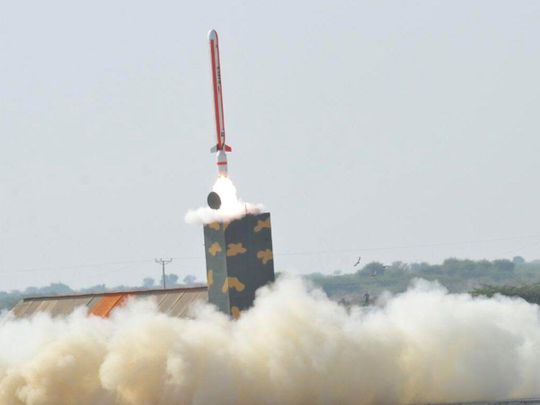
Islamabad: Pakistan has successfully test-fired the advanced version of domestically developed Babur cruise missile 1B.
The test was witnessed by the director general of Strategic Plans Division (SPD) Lt Gen Nadeem Zaki Manj who expressed full confidence that the test “will further strengthen Pakistan’s strategic deterrence.” He congratulated the scientists and engineers on achieving excellence in the domain of cruise missile technology.
Chairman National Engineering and Scientific Commission (NESCOM) Dr Raza Samar, Commander Army Strategic Force Command Lt Gen Muhammad Ali and senior officers from strategic organizations attended the test firing at an undisclosed location.
The military’s statement did not give details on the range of the missile and only mentioned that the range has been “extended.” However, experts believe that the missile’s range has been extended to more than 900 kilometres. The missile of the same model could strike targets both at land and sea with “high accuracy” at a range of 700 kilometres.
Strengthen defence capabilities
Talking to Gulf News, former Air Marshal M. Ashfaque Arain, who is the director of emerging technologies at the Centre for Aerospace & Security Studies (CASS) said: “These tests are conducted to consolidate and verify different [weapons] systems for assured employment” to counter threats from the enemy. “Pakistan does not want to engage in an arms race but is focused on strengthening its existing defence capabilities” and maintaining effective deterrence.
Babur cruise missile
The Babur (Hatf 7) is a ground-launched cruise missile with an estimated range of over 700km. It can deliver both nuclear and conventional payloads. The low-flying stealthy cruise missiles are generally difficult to detect with radar.
Pakistan first tested the Babur system in August 2005 and has launched its several variants over the years. It has been tested from both land-based and underwater platforms. In 2017, the country tested its first submarine-launched cruise missile of Babur variant, the Babur-III, which has a range of 450 km.
In 2018, Pakistan tested the Babur weapon system 1B with a range of 700 km and advanced avionics and high accuracy. The 1B system can identify and engage diverse targets from various locations and altitudes, according to experts. In February 2021, Pakistan tested the 450-km range Babur cruise missile 1A which was launched from a multi-tube missile launch vehicle.
More From Pakistan

Pakistan bus crash kills at least 29 people

Pakistan evacuates students from Kyrgyz capital
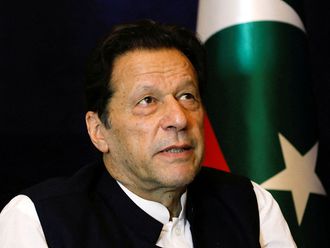
Former Pakistan PM Imran Khan gets bail in graft case
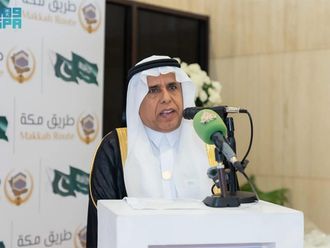
‘Mecca Road Initiative’ launched at Jinna airport

Kuwait set to impose 150-dinar fee for new work permits
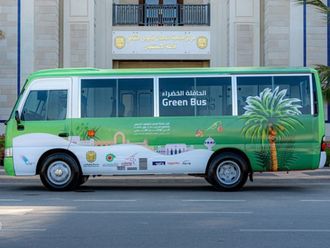
Bus powered by date kernels in Oman

Saudi Arabia launches 2 Hajj packages for residents

Kuwait eyes new markets as domestic help shortage bites

Fine, 6 months in jail for visit visa rule violators

A library book returned 84 years overdue
Uae calls for ceasefire, humanitarian access in gaza, syria says israeli strike kills girl, wounds 10 others, swiatek survives scare to pip osaka in thriller, lava spews again from volcanic eruption in iceland.

Get Breaking News Alerts From Gulf News
We’ll send you latest news updates through the day. You can manage them any time by clicking on the notification icon.
- Election 2024
- Entertainment
- Newsletters
- Photography
- Personal Finance
- AP Investigations
- AP Buyline Personal Finance
- AP Buyline Shopping
- Press Releases
- Israel-Hamas War
- Russia-Ukraine War
- Global elections
- Asia Pacific
- Latin America
- Middle East
- Election Results
- Delegate Tracker
- AP & Elections
- Auto Racing
- 2024 Paris Olympic Games
- Movie reviews
- Book reviews
- Personal finance
- Financial Markets
- Business Highlights
- Financial wellness
- Artificial Intelligence
- Social Media
Pakistan tests home-grown missile with additional range
- Copy Link copied
ISLAMABAD (AP) — Pakistan’s military test-fired a home-grown Babur cruise missile on Tuesday that has a range of more than 900 kilometers (560 miles), twice the distance of an earlier missile of the same model, a statement said.
The missile’s extended range further enhances nuclear-armed Pakistan’s military capability.
Pakistan and neighbor India, which also has a nuclear arsenal, have a volatile relationship, having fought three wars against each other. The military buildup of both countries is closely watched by a nervous international community as India and Pakistan have come dangerously close to a fourth war at least twice over the last two decades.
The missile, dubbed the Babur Cruise Missile 1B, is domestically developed, said the military statement. An earlier version had the limited capacity to travel just 450 kilometers (280 miles).
- Air Warfare
- Cyber (Opens in new window)
- C4ISR (Opens in new window)
- Training & Sim
Asia Pacific
- Mideast Africa
- The Americas
- Top 100 Companies
- Defense News Weekly
- Money Minute
- Whitepapers & eBooks (Opens in new window)
- DSDs & SMRs (Opens in new window)
- Webcasts (Opens in new window)
- Events (Opens in new window)
- Newsletters (Opens in new window)
- Events Calendar
- Early Bird Brief
- Digital Edition (Opens in new window)
Pakistan launches Ghauri ballistic missile in test of readiness
ISLAMABAD — Pakistan has successfully conducted a training launch of a Ghauri medium-range ballistic missile.
The military’s media branch, Inter Services Public Relations Pakistan, said Tuesday’s test was intended to determine the “operational and technical readiness of Army Strategic Forces Command.” ASFC operates Pakistan’s land-based, nonconventional ballistic and cruise missiles, most of which can be armed with nuclear warheads .
The Ghauri missile’s survivability on a battlefield is unlikely given it would have to move with a convoy of support vehicles that provide fuel and prepare it for launch; that grouping of platforms would make it vulnerable to detection.
The country has replaced the weapon with the more advanced and survivable Shaheen series of solid-fuel ballistic missiles.
But Mansoor Ahmed, an expert on Pakistan’s nuclear program, said the Ghauri first underwent testing in 1998 and is still useful.
Ahmed, now in academia at the Australian National University, also told Defense News the Ghauri “appears to be the most widely tested missile system in the Pakistani arsenal.”
“Although this particular test is a training exercise, in addition to validating improved technical and performance parameters, these tests could also be an affordable way to test new reentry vehicle technologies,” Ahmed added.
And given “it is the only liquid-fueled ballistic missile in Pakistan’s strategic forces, the liquid-fueled tech may at least have given Pakistan experience to develop a satellite launch vehicle if it wants to go down that route.”
The Ghauri is fueled by TM-185 (a mixture of gasoline and mainly kerosene) and fuming nitric acid, he explained.
While kerosene has been, and still is, used for space rocket applications, he said, fuming nitric acid generally is not. A more usual combination, he added, would be kerosene and high-test peroxide that may deliver a higher specific impulse — or greater bang for your buck in terms of efficiency — to deliver cargo to orbit.
Usman Ansari is the Pakistan correspondent for Defense News.
More In Asia Pacific
Defense Innovation Unit awards funding for sea-based launch pad
The award is part of a diu effort to prototype commercial solutions that support responsive and precise space launch capabilities..
DIU sees new portfolio deepening ties between labs, commercial firms
The head of the new emerging tech portfolio said the goal is bring "diu flavor" to the s&t community..
National Reconnaissance Office launches proliferated constellation
The launch is the first of six planned for this year and is part of a broader nro effort to extend its satellite architecture across multiple orbits..
Space Force to hold annual Tactically Responsive Space demos
The space force aims to have an operational capability by 2026, but will maintain an annual demonstration cadence, according to lt. gen. phillip garrant..
Space Force to demonstrate satellite maneuvering in 2026 mission
Space systems command and spacewerx awarded washington-based starfish space $37.5 million to build and operate a satellite for the mission., featured video, how young soldiers got one of the most dangerous jobs in the vietnam war: long range jungle recon.
'Shadows in the Jungle' | A new series on the Vietnam War from Military Times beginning May 27
U.S. forces train with joint forces in the Pacific, strengthen ties
U.S. forces train with joint forces in the Pacific, map out new capabilities
Trending now, boeing wins $7.5 billion contract from us air force for guided bombs, newport news yard seeks experienced workforce for nuclear shipbuilding, ukraine’s air defense woes can’t be fixed by american aid, us army sets development plan for future tactical drone, poland eyes fortifications on its border with belarus.
- Missiles of the World
Babur (Hatf 7)
Babur (hatf 7) at a glance.
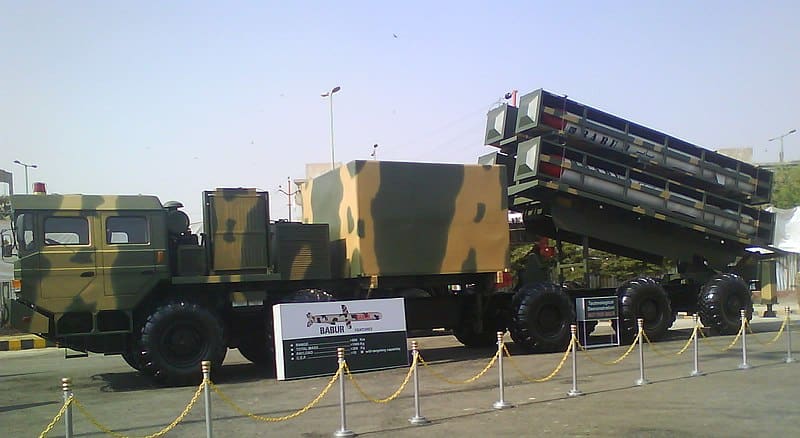
Babur Development
Specifications.
- “Hatf 7 (Babur), in IHS Jane’s Weapons: Strategic 2015-2016, ed. James C. O’Halloran (United Kingdom: IHS, 2015), 172; Hans M. Kristensen & Robert S. Norris, Pakistani nuclear forces, 2015, Bulletin of the Atomic Scientists, 71:6, 64.
- “Hatf 7 (Babur), in IHS Jane’s Weapons: Strategic 2015-2016, ed. James C. O’Halloran (United Kingdom: IHS, 2015), 172.
- “Hatf 7 (Babur), in IHS Jane’s Weapons: Strategic 2015-2016, ed. James C. O’Halloran (United Kingdom: IHS, 2015), 172
- National Air and Space Intelligence Center, U.S. Air Force, “Ballistic and Cruise Missile Threat,” 2013, http://fas.org/programs/ssp/nukes/nuclearweapons/NASIC2013_050813.pdf.
- Press release PR-482/2016-ISPR, Pakistan Inter Services Public Relations, December 14, 2016, https://www.ispr.gov.pk/press-release-detail.php?id=3632.
- Ankit Panda, “Pakistan Tests Enhanced-Range Variant of Babur Nuclear-Capable Land-Attack Cruise Missile,” The Diplomat, April 16, 2018, https://thediplomat.com/2018/04/pakistan-tests-enhanced-range-variant-of-babur-nuclear-capable-land-attack-cruise-missile/.
- Naveed Siddiqui, “Pakistan Army conducts successful test launch of surface-to-surface Babur cruise missile,” Dawn, February 11, 2021, https://www.dawn.com/news/1606770/pakistan-army-conducts-successful-test-launch-of-surface-to-surface-babur-cruise-missile.

Pakistan successfully test-fires 'enhanced range version' of Babar cruise missile

ISLAMABAD: Pakistan on Tuesday successfully test-fired an "enhanced range version" of the indigenously-built surface-to-surface Babur cruise missile that can strike targets up to 900 kilometres, twice the distance of an earlier missile of the same model.
"Pakistan today conducted a successful test of an enhanced range version of the indigenously developed Babur Cruise Missile 1B," the army said in a statement on Tuesday.
In February, Pakistan had conducted a successful training launch of the earlier version of Babar cruise missile that had the limited capacity to strike targets up to 450 kilometres.
The Babar missile "is capable of engaging targets at land and sea with high precision," the Army said at the time in a statement.
Lt Gen Nadeem Zaki Manj, Director General, Strategic Plans Division; Dr Raza Samar, Chairman National Engineering and Scientific Commission (NESCOM); Lt Gen Muhammad Ali, Commander Army Strategic Force Command and senior officers witnesses the launch of Babur Cruise Missile 1B, according to the army.
"Director General, Strategic Plans Division, congratulated the scientists and engineers on achieving excellence in the domain of cruise missile technology and expressed his full confidence that this test will further strengthen Pakistan's Strategic Deterrence," it said.
President Dr Arif Alvi, Prime Minister Imran Khan, Chairman Joint Chiefs of Staff Committee and the services chiefs congratulated the scientists and engineers on the successful launch.
Pakistan regularly tests its weapons.
In August, it conducted a successful test flight of Fatah-1, a Pakistan-made guided multi-launch rocket system capable of delivering conventional warheads.
Follow The New Indian Express channel on WhatsApp
Download the TNIE app to stay with us and follow the latest
Related Stories

Pakistan Showcases New Harbah Anti-Ship Missile

Pakistan showcased its new anti-ship cruise missile Harbah for the first time at the Doha International Maritime Defence Exhibition and Conference (DIMDEX) in Qatar.
The missile was developed for the Pakistan Navy to create an indigenous anti-ship missile solution for its vessels. The country currently deploys the missile on several naval platforms.
The Pakistan Navy Flotilla, including PNS Shamsheer, PNS Azmat, and Kolachi, also participated in the 11th DIMDEX conference last week.
Harbah Anti-Ship Missile
A non-nuclear, “fire and forget” weapon system, the Harbah was developed from the Babur family of missiles by state-owned Global Industrial Defence Solutions.
The medium-range ship-launched cruise missile can strike land and sea targets up to 280 kilometers (174 miles) away at a speed of 988 kilometers (614 miles) per hour in all weather conditions.
It uses a Digital Scene Matching Area Correlator camera, radar, and infrared seeker to follow and strike targets. The Harbah has a modular design with further enhancements to boost its capabilities.
In January 2018, Pakistan announced the successful testing of the missile from the Azmat class fast attack craft PNS Himmat in the Arabian Sea.
About DIMDEX 2022
DIMDEX 2022 showcased products from more than 200 companies from 20 countries, including 32 firms from the Turkish defense industry.
In addition to Pakistan, several other countries, including China, France, Germany, Italy, and the US, set up pavilions at the exhibition.
The three-day biennial exhibition came as Qatar expands its military cooperation with international allies. The country has signed billions in defense deals with international defense firms.
Subscribe to our mailing list
Related articles.

RTX’s Space-Based Missile Warning System in Full Operation
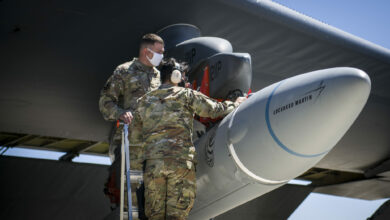
UK to Deploy First Domestically-Made Hypersonic Missile by 2030

Italy Delivered Storm Shadow Missiles to Ukraine: UK Def Secretary

Spain Says Will Send Patriot Air Defense Systems to Ukraine
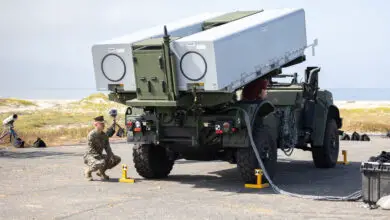
Oshkosh to Deliver ROGUE Fires Carrier to US Marines

US Nudges Germany on Long-Range Missiles for Ukraine
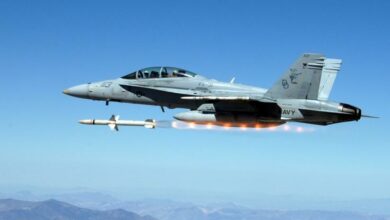
US OKs $2B AARGM Extended Range Missile Sales to Poland, Netherlands

Raytheon Expands Missile Factory in Alabama

US Navy Inaugurates Strategic Missions Facility Construction in Indiana
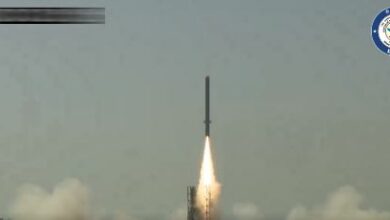
India Flight-Tests Indigenous Cruise Missile

Switch language:

US Army fires PAC-3 missile from Aegis launcher for first time
The US Army has fired a PAC-3 missile from a ground-based Mk70 launcher to intercept a cruise missile target mid-flight.
- Share on Linkedin
- Share on Facebook
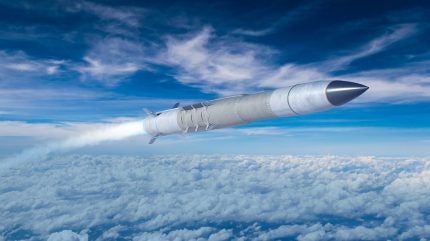
The US Armed Forces are working closely to integrate and adapt different missile systems within their inventories.
Most recently, the US Army sand Lockheed Martin launched a Patriot Advanced Capability 3 (PAC-3) missile segment enhancement interceptor from a US Navy (USN) ground-based, containerised Mk70 launcher platform against a cruise missile target mid-flight for the first time.
Go deeper with GlobalData

Robotics in Defense and Homeland Security - Thematic Research
Premium insights.
The gold standard of business intelligence.
Find out more
Related Company Profiles
Lockheed martin corp.
“This successful test showcases Lockheed Martin’s commitment to developing mission-focused, integrated technology to keep those who serve ahead of evolving threats,” said Tom Copeman, vice president of strategy and naval programmes at Lockheed Martin.
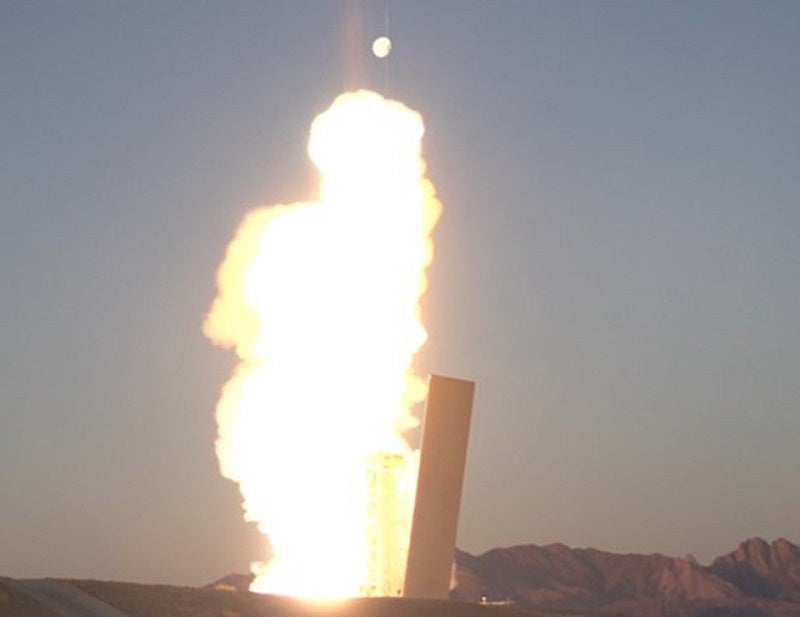
Army leverages naval missile launcher
Meanwhile, earlier in May 2024, the USN similarly deployed a containerised, shipborne version of the Mk70 mod 1 payload delivery system just off Bornholm Island , a Danish territory in the Baltic Sea.
However, this containerised missile system used a Standard Missile-6 (SM-6). This was the second convoy rehearsal between the two militaries to feature the Mk70.
The Mk70 brings a containerised combat launcher housed within a 40-foot container equipped with four vertical launch system strike-length missile cells. The launcher adapts the Mk41 VLS currently used by the US Navy on Ticonderoga-class cruisers (CG-47) and Arleigh Burke-class destroyers (DDG 51) into a rapidly deployable and relocatable ground system.
How well do you really know your competitors?
Access the most comprehensive Company Profiles on the market, powered by GlobalData. Save hours of research. Gain competitive edge.

Your download email will arrive shortly
Not ready to buy yet? Download a free sample
We are confident about the unique quality of our Company Profiles. However, we want you to make the most beneficial decision for your business, so we offer a free sample that you can download by submitting the below form
Missiles at the heart of US deterrence projection
This multi-domain missile build-up points to the importance of the nation’s missile strike capabilities across air, land and sea.
For the Army, Lockheed Martin is working to deliver an enhanced Integrated Air and Missile Defence (IAMD) capability to the US’s most modern combat system to defend against simultaneous advanced air, surface and missile threats.
Meanwhile, the USN is preparing for a prospective peer-on-peer conflict in the Indo Pacific. Mark Cancian, a senior fellow at the Washington-based Center for Strategic and International Studies, observed:
“A problem for US surface ships will be Chinese missiles, and there are so many of them,” Cancian suggested. “Now their ranges are so long that US surface ships can get pushed out, really past Guam.”
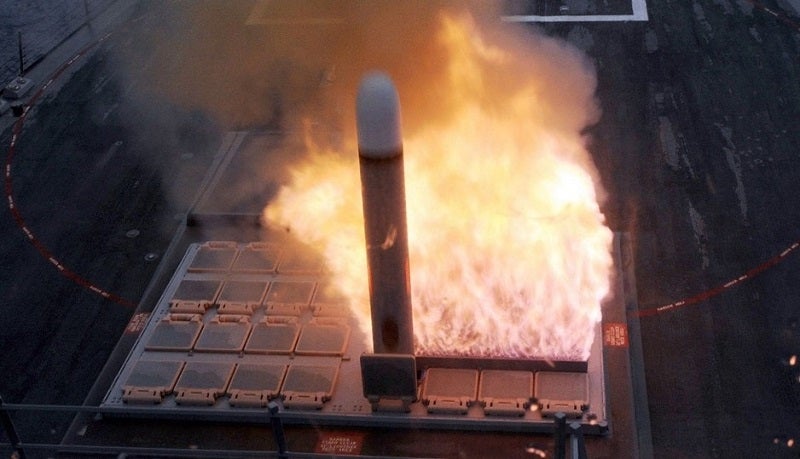
Sign up for our daily news round-up!
Give your business an edge with our leading industry insights.
More Relevant
Military generators for the defence industry .
The ICC seeks arrest warrants for Netanyahu, Hamas leaders. What happens next?
British army’s ah-64e attack helicopter purchase forecast to be on budget, ukraine donations offer new lease of life to british army’s scimitar light tank, sign up to the newsletter: in brief, your corporate email address, i would also like to subscribe to:.
Global Defence Technology : Army Technology Focus (monthly)
Thematic Take (monthly)
I consent to Verdict Media Limited collecting my details provided via this form in accordance with Privacy Policy
Thank you for subscribing
View all newsletters from across the GlobalData Media network.

Today's Paper | May 30, 2024
Pakistan denounces ‘political use of export controls’ after us sanctions alleged missile suppliers.
Pakistan rejected what it said was the “political use of export controls” after the United States imposed sanctions on four entities for their alleged involvement in supplying “missile-applicable items” to Pakistan’s ballistic missile programme, the Foreign Office (FO) said on Saturday.
The US State Department claimed on Friday evening that the entities — three Chinese and one from Belarus — were particularly assisting Pakistan’s long-range missile endeavors.
The statement specified that “the ultimate goal of sanctions is not to punish, but to bring about a positive change in behavior.”
The entities facing sanctions include the Belarus-based Minsk Wheel Tractor Plant, the People’s Republic of China-based Xi’an Longde Technology Development Company Limited, Tianjin Creative Source International Trade Co Ltd and Granpect Company Limited.
As per the sanctions imposed under Executive Order 13382, all property and interests in property of the designated entities that are in the United States or under the control of US persons are now blocked. Furthermore, any individuals or entities with ownership, directly or indirectly, of 50 per cent or more by the designated persons are also subject to these sanctions.
These measures prohibit transactions involving any property or interests in property of designated or blocked persons unless authorised by the Office of Foreign Assets Control (OFAC) or exempt. This includes contributions and provision of funds, goods, or services to or from any blocked person.
Moreover, the entry of designated individuals into the United States has been suspended under Presidential Proclamation 8693.
The US government explained that “the integrity of these sanctions lies not only in the ability to designate and add persons to the Specially Designated Nationals and Blocked Persons List (SDN), but also in the willingness to remove persons from the list in accordance with the law.”
Following the sanctions, FO spokesperson Mumtaz Zahra Baloch issued a statement today saying: “We reject political use of export controls. It is well known that the same jurisdictions, which claim strict adherence to non-proliferation controls, have waived off licensing requirements for advanced military technologies for some countries.”
She added that “such discriminatory approaches and double standards” undermine the credibility of non proliferation regimes and also the objectives of regional and global peace and security by “accentuating military asymmetries”.
Baloch said that such listings of commercial entities took place in the past as well on allegations of links to Pakistan’s ballistic missile programme “without sharing any evidence whatsoever”.
“While we are not aware of the specifics of the latest measures by the United States, in the past we have come across many instances where listings have been made on mere suspicion or even when the involved items were not on any control lists but were deemed sensitive under catch-all provisions,” she said.
Baloch said that Pakistan had pointed out many times the need to avoid “arbitrary application of export controls” and for discussions between concerned parties for an “objective mechanism to avoid erroneous sanctions on technology needed purely for socio-economic development pursuits”.
She concluded that Pakistan was ready to discuss end-use and end-user verification mechanisms so that legitimate commercial users wre not hurt by the “discriminatory application” of export controls.
‘Sanctions reminder to Pakistan of American carrot and stick policy’
Shuja Nawaz, a fellow at the South Asia Center of the Atlantic Council in Washington, told Dawn that “the nub of US sanctions on four entities allegedly supplying missile technology to Pakistan is captured in its stated aim: The ultimate goal of sanctions is not to punish, but to bring about a positive change in behavior.”
But he also noted that the sanctions directly punished Pakistan for pursuing the development of missiles.
“In a week when the US officialdom went out of its way to assist Pakistan in its economic recovery efforts via the IMF, World Bank, and the Asian Development Bank, as well as US development finance institutions, these sanctions are going to punish Pakistan publicly,” Nawaz said, adding that this was “a reminder that for all the carrots, there are sticks that the US can deploy.”
Nawaz suggested that Pakistani authorities should also “ask themselves who inside Pakistan provided the information to American authorities?”

US, Pakistan discuss ‘recent events in region’

Govt vows no compromise on nukes amid IMF deal delay

Pakistani firms among 37 put on US trade blacklist

دبئی پراپرٹی لیکس میں سابق فوجی افسران کی جائیدادیں بھی شامل

دبئی لیکس: ریت پر محلات بنانے والی پاکستانی شخصیات

کون سے ممالک اسرائیل کو ہتھیار فراہم کرتے ہیں؟

Why Does Pakistan Mark Youm-e-Takbeer On May 28?

Pakistan’s Power Woes: Loadshedding and High Electricity Bills

Budget 2024–25: Govt Considers Withdrawing Tax Waivers For The Rich


How Did World React To Israel’s Attack On Rafah Tent Camp?

Can Israel Face Consequences For Defying ICJ Ruling?

Indian Election: The Pakistani Connection

Women Make Up Less Than 20% Of Top Earners In Finance Sector

Bringing Paddle Tennis To Pakistan
Dear visitor, the comments section is undergoing an overhaul and will return soon.
Latest Stories

Iran’s Khamenei seeks trusted hardliner to replace Raisi in June vote

LHC to hear PTI plea against Punjab govt’s approval of more cases against Imran, party leaders

Karachi sizzles on hottest day of the year as temperature soars to 41.5°C

Gillespie says Pakistan have nothing to lose at World Cup 2024, need to play aggressive cricket

Young Afghan side among the favourites for T20 World Cup, claims opener Atal

Inflation to hover around 13.5-14.5pc in May: finance ministry

‘Proud Palestinian’ Bella Hadid highlights the keffiyeh to show her beautiful culture

‘The whole of India is silent’ — Saheefa Jabbar Khattak slams Bollywood’s silence on Palestine

Nicki Minaj fined and released after arrest in Amsterdam for carrying ‘soft drugs’
Most popular.

‘Nothing to do with army’: PTI disassociates Imran from controversial 1971 X post

Iddat case complainant Khawar Maneka assaulted outside Islamabad court

England captain Buttler to miss third Pakistan T20 for birth of child

NAB ‘raids’ Bahria Town offices in Rawalpindi

Case of the missing poet

First steps

Cartoon: 29 May, 2024

Imran only wants talks with the empowered, says Alvi

World War III?

Sufi festivals reclaim spirit after violence

Editorial: It is mature of the KP govt to set aside its differences for the good of its people

‘Demolition of my life’: Chronicling the horrors of forced evictions in Pakistan

Some may see voting for Donald Trump as something they simply cannot do

The approaching verdict

Termination limits

Old assumptions, new reality

Rafah inferno

Afghan puzzle
Attacking minorities, persistent scourge, paris-bound faiqa wants to train under coach fayyaz.

Read the May magazine issue on food and climate change

Nuclear Notebook: How many nuclear weapons does Pakistan have in 2021?
By Hans M. Kristensen , Matt Korda | September 7, 2021
Editor ’s note: The Nuclear Notebook is researched and written by Hans M. Kristensen, director of the Nuclear Information Project with the Federation of American Scientists, and Matt Korda, a research associate with the project. The Nuclear Notebook column has been published in the Bulletin of the Atomic Scientists since 1987. This issue’s column examines Pakistan’s nuclear arsenal, which may include approximately 165 warheads. The authors estimate that the country’s stockpile could realistically grow to around 200 by 2025, if the current trend continues.
To download a free PDF of this article, click here .
To see all previous Nuclear Notebook columns, click here .
Pakistan continues to expand its nuclear arsenal with more warheads, more delivery systems, and a growing fissile materials production industry. Analysis of a large number of commercial satellite images of Pakistani army garrisons and air force bases shows what appear to be launchers and facilities that might be related to the nuclear forces.
We estimate that Pakistan now has a nuclear weapons stockpile of approximately 165 warheads (See Table 1). The US Defense Intelligence Agency projected in 1999 that Pakistan would have 60 to 80 warheads by 2020 (US Defense Intelligence Agency 1999 , 38), but several new weapon systems have been fielded and developed since then, which leads us to the higher estimate.
With several new delivery systems in development, four plutonium production reactors, and an expanding uranium enrichment infrastructure, however, Pakistan’s stockpile has the potential to increase further over the next 10 years. The size of this projected increase will depend on several factors, including how many nuclear-capable launchers Pakistan plans to deploy, how its nuclear strategy evolves, and how much the Indian nuclear arsenal grows. Speculation that Pakistan may become the world’s third-largest nuclear weapon state––with a stockpile of some 350 warheads a decade from now––are, we believe, exaggerated, not least because that would require a buildup two to three times faster than the growth rate over the past two decades. We estimate that the country’s stockpile could more realistically grow to around 200 warheads by 2025, if the current trend continues. But unless India significantly expands its arsenal or further builds up its conventional forces, it seems reasonable to expect that Pakistan’s nuclear arsenal will not continue to grow indefinitely but might begin to level off as its current weapons programs are completed.
Analyzing Pakistan’s nuclear forces is fraught with uncertainty, given that the Pakistani government has never publicly disclosed the size of its arsenal and media sources frequently embellish news stories about nuclear weapons. Therefore, the estimates made in the Nuclear Notebook are based on analysis of Pakistan’s nuclear posture, observations via commercial satellite imagery, previous statements by Western officials, and private conversations with officials.
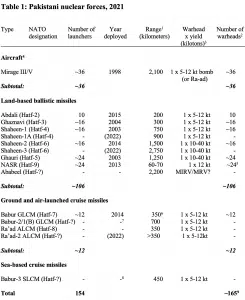
KristensenKorda Table 1
Pakistan’s nuclear posture
Pakistan is pursuing what it calls a “full spectrum deterrence posture,” which includes long-range missiles and aircraft for strategic missions, as well as several short-range, lower-yield nuclear-capable weapon systems in order to counter military threats below the strategic level. According to former Pakistani officials, this posture––and its particular emphasis on non-strategic nuclear weapons––is specifically intended as a reaction to India’s perceived “Cold Start” doctrine (Kidwai 2020). This alleged doctrine revolves around India maintaining the capability to launch large-scale conventional strikes or incursions against Pakistani territory below the threshold at which Pakistan would retaliate with nuclear weapons. [i]
In 2015, a former member of Pakistan’s National Command Authority, Lt. Gen. (Ret.) Khalid Kidwai, said the NASR short-range weapon specifically “was born out of a compulsion of this thing that I mentioned about some people on the other side toying with the idea of finding space for conventional war, despite Pakistan nuclear weapons.” Pakistan’s understanding of India’s “Cold Start” strategy was, he said, that Delhi envisioned launching quick strikes into Pakistan within two to four days with eight to nine brigades simultaneously (Kidwai 2015 ). Such an attack force might involve roughly 32,000–36,000 troops. “I strongly believe that by introducing the variety of tactical nuclear weapons in Pakistan’s inventory, and in the strategic stability debate, we have blocked the avenues for serious military operations by the other side,” Kidwai explained (Kidwai 2015 ).
After Kidwai’s statement, Pakistan’s Foreign Secretary Aizaz Chaudhry publicly acknowledged the existence of Pakistan’s “low-yield, tactical nuclear weapons,” apparently the first time a top government official had done so (India Today 2015 ). At the time, the tactical missiles had not yet been deployed but their purpose was further explained by Pakistani defense minister Khawaja M. Asif in an interview with Geo News in September 2016: “We are always pressurised [sic] time and again that our tactical (nuclear) weapons, in which we have a superiority, that we have more tactical weapons than we need. It is internationally recognized that we have a superiority and if there is a threat to our security or if anyone steps on our soil and if someone’s designs are a threat to our security, we will not hesitate to use those weapons for our defense” (Scroll 2016 ). In developing its nonstrategic nuclear strategy, one study has asserted that Pakistan to some extent has emulated NATO’s flexible response strategy without necessarily understanding how it would work (Tasleem and Dalton 2019).
Pakistan’s nuclear posture—and particularly its pursuit of tactical nuclear weapons—has created considerable concern in other countries, including the United States, which fears that it increases the risk of escalation and lowers the threshold for nuclear use in a military conflict with India. Over the past decade and a half, the US assessment of nuclear weapons security in Pakistan appears to have changed considerably from confidence to concern, particularly as a result of the introduction of tactical nuclear weapons. In 2007, a US State Department official told Congress that, “we’re, I think, fairly confident that they have the proper structures and safeguards in place to maintain the integrity of their nuclear forces and not to allow any compromise” (Boucher 2007 ). After the emergence of tactical nuclear weapons, the Obama administration changed the tune: “Battlefield nuclear weapons, by their very nature, pose [a] security threat because you’re taking battlefield nuclear weapons to the field where, as you know, as a necessity, they cannot be made as secure,” as US Undersecretary of State Rose Gottemoeller told Congress in 2016 (Economic Times 2016 ).
The Trump administration echoed this assessment in 2018: “We are particularly concerned by the development of tactical nuclear weapons that are designed for use in battlefield. We believe that these systems are more susceptible to terrorist theft and increase the likelihood of nuclear exchange in the region” (Economic Times 2017 a). The Trump administration’s South Asia strategy in 2017 urged Pakistan to stop sheltering terrorist organizations, and noted the need to “prevent nuclear weapons and materials from coming into the hands of terrorists” (The White House 2017 ).
The Biden administration appears to share the concern but with a broader aperture. In the 2019 Worldwide Threat Assessment, US Director of National Intelligence Daniel R. Coats said, “Pakistan continues to develop new types of nuclear weapons, including short-range tactical weapons, sea-based cruise missiles, air-launched cruise missiles, and longer-range ballistic missiles,” noting that “the new types of nuclear weapons will introduce new risks for escalation dynamics and security in the region” (Coats 2019, 10).
Pakistani officials, for their part, reject such concerns. In 2021, Prime Minister Imran Khan stated that he was “not sure whether we’re growing [the nuclear arsenal] or not because as far as I know…the only one purpose [of Pakistan’s nuclear weapons]––it’s not an offensive thing.” He added that “Pakistan’s nuclear arsenal is simply as a deterrent, to protect ourselves” (Laskar 2021). Pakistani officials have also challenged the notion that the security of their nuclear weapons is deficient. Samar Mubarik Mund, the former director of the country’s National Defense Complex, explained in 2013 that a Pakistani nuclear warhead is “assembled only at the eleventh hour if [it] needs to be launched. It is stored in three to four different parts at three to four different locations. If a nuclear weapon doesn’t need to be launched, then it is never available in assembled form” (World Bulletin 2013 ). Additionally, in 2017 the National Command Authority reviewed the “Nuclear Security Regime” of the nuclear arsenal and expressed “full confidence” in both Pakistan’s command and control systems and existing security measures meant to “ensure comprehensive stewardship and security of strategic assets and materials.” It lauded the nuclear arsenal’s “high standards of training and operational readiness” (ISPR 2017d ). These statements on security and safety were, in part, a response to international concern that Pakistan’s evolving arsenal––particularly its growing inventory of short-range nuclear weapon systems––could lead to problems with warhead management and command and control during a crisis. Satellite images show that security perimeters around many bases and military facilities have been upgraded over the past decade in response to terrorist attacks.
Nuclear policy and operational decision-making in Pakistan are undertaken by the National Command Authority, which is chaired by the prime minister and includes both high-ranking military and civilian officials. The primary nuclear-related body within the National Command Authority is the Strategic Plans Division (SPD), which has been described by the former Director of the SPD’s Arms Control and Disarmament Affairs as “a unique organization that is incomparable to any other nuclear-armed state. From operational planning, weapon development, storage, budgets, arms control, diplomacy, and policies related to civilian applications for energy, agriculture, and medicine, etc., all are directed and controlled by SPD.” Additionally, SPD “is responsible for nuclear policy, strategy and doctrines. It formulates force development strategy for the tri-services strategic forces, operational planning at the joint services level, and controls movements and deployments of all nuclear forces. SPD implements NCA’s employment decisions for nuclear use through its NC3 systems” (Khan 2019).
The National Command Authority was convened after India and Pakistan engaged in open hostilities in February 2019, when Indian fighters dropped bombs near the Pakistani town of Balakot in response to a suicide bombing conducted by a Pakistan-based militant group. In retaliation, Pakistani aircraft shot down and captured an Indian pilot before returning him a week later and convened the National Command Authority. Following the meeting, a senior Pakistani official gave what appeared to be a thinly veiled nuclear threat: “I hope you know what the [National Command Authority] means and what it constitutes. I said that we will surprise you. Wait for that surprise. … You have chosen a path of war without knowing the consequence for the peace and security of the region” (Abbasi 2019 ).
The nuclear weapons production complex
Pakistan has a well-established and diverse fissile material production complex that is expanding. It includes the Kahuta uranium enrichment plant east of Islamabad, which appears to be growing with the near completion of what could be another enrichment plant, as well as the enrichment plant at Gadwal to the north of Islamabad (Albright, Burkhard, and Pabian 2018 ). Four heavy-water plutonium production reactors appear to have been completed at what is normally referred to as the Khushab Complex some 33 kilometers (20 miles) south of Khushab in Punjab province. Three of the reactors at the complex have been added in the past 10 years. The addition of a publicly confirmed thermal power plant at Khushab provides new information for estimating the power of the four reactors (Albright et al. 2018a ). The New Labs Reprocessing Plant at Nilore, east of Islamabad, which reprocesses spent fuel and extracts plutonium, has been expanded. Meanwhile, a second reprocessing plant located at Chashma in the northwestern part of Punjab province may have been completed and become operational by 2015 (Albright and Kelleher-Vergantini 2015 ). A significant expansion to the Chashma complex was under construction between 2018 and 2020, although it remains unclear whether the reprocessing plant continued to operate throughout that period (Hyatt and Burkhard 2020).
Nuclear-capable missiles and their mobile launchers are developed and produced at the National Defence Complex (sometimes called the National Development Complex) located in the Kala Chitta Dahr mountain range west of Islamabad. The complex is divided into two sections. The western section south of Attock appears to be involved in development, production, and test-launching of missiles and rocket engines. The eastern section north of Fateh Jang is involved in production and assembly of road-mobile transporter erector launchers (TELs), which are designed to transport and fire missiles. Satellite images show the presence of launchers for Shaheen I and Shaheen II ballistic missiles and Babur cruise missiles. The Fateh Jang section has been expanded significantly with several new launcher assembly buildings over the past 10 years, and the complex continues to expand. Other launcher and missile-related production and maintenance facilities may be located near Tarnawa and Taxila.
Little is publicly known about warhead production, but experts have suspected for many years that the Pakistan Ordnance Factories near Wah, northwest of Islamabad, serve a role. One of the Wah factories is located near a unique facility with six earth-covered bunkers (igloos) inside a multi-layered safety perimeter with armed guards. The security perimeter was expanded significantly between 2005 and 2010, possibly in response to terrorist attacks against other military facilities.
A frequent oversimplification for estimating the number of Pakistani nuclear weapons is to derive the estimate directly from the amount of weapon-grade fissile material produced. As of the beginning of 2020, the International Panel on Fissile Materials estimated that Pakistan had an inventory of approximately 3,900 kilograms (kg) of weapon-grade (90 percent enriched) highly enriched uranium (HEU), and about 410 kg of weapon-grade plutonium (International Panel on Fissile Materials 2021). This material is theoretically enough to produce between 285 and 342 warheads, assuming that each first-generation implosion-type warhead’s solid core uses either 15 to 18 kg of weapon-grade HEU or 5 to 6 kg of plutonium.
However, calculating stockpile size based solely on fissile material inventory is an incomplete methodology that tends to produce inflated numbers. Instead, warhead estimates must take several factors into account: the amount of weapon-grade fissile material produced, warhead design choice and proficiency, warhead production rates, numbers of operational nuclear-capable launchers, how many of those launchers are dual-capable, nuclear strategy, and statements by government officials.
Estimates must assume that not all of Pakistan’s fissile material has ended up in warheads. Like other nuclear weapon states, Pakistan probably maintains a reserve. Moreover, Pakistan simply lacks enough nuclear-capable launchers to accommodate 285 to 342 warheads; furthermore, all of Pakistan’s launchers are thought to be dual-capable, which means that some of them, especially the shorter-range systems, presumably are assigned non-nuclear missions as well—perhaps even primarily. Finally, official statements often refer to “warheads” and “weapons” interchangeably, without making it clear whether it is the number of launchers or the warheads assigned to them that are being discussed.
The amount of fissile material in warheads—and the size of the warhead—can be reduced, and their yield increased, by using tritium to “boost” the fission process. But Pakistan’s tritium production capability is poorly understood. A German company allegedly provided Pakistan with a small amount of tritium and some tritium-processing technology in the late 1980s (Kalinowski and Colschen 1995 ; Gordon 1989), and China allegedly shipped some tritium directly to Pakistan (Kalinowski and Colschen 1995 , 147, 181). The Khushab complex for years has been rumored to produce tritium, and the PINSTECH complex near Nilore may do so as well (FAS 2000a ). [ii] However, one rumored tritium extraction plant at Khushab turned out to be a coal-fired power plant (Burkhard, Lach, and Pabian 2017 ). Pakistan claimed that all its nuclear tests in 1998 were tritium-boosted HEU designs, but the yields detected by seismic signals were not sufficient to substantiate such a capability. Nonetheless, Thomas Reed and Danny Stillman conclude in The Nuclear Express that the tests included two designs, the first of which was an HEU device that used boosting. The second test involved a plutonium device (Reed and Stillman 2009 , 257–258).
One study in early 2021 estimated that Pakistan could have produced 690 grams of tritium by the end of 2020, sufficient to boost over 100 weapons. The study assessed that warheads produced for delivery by the Babur and Ra-ad cruise missiles and the NASR and Abdali missiles almost certainly would require a small, lightweight tritium-boosted fission weapon (Jones 2021). If Pakistan has produced tritium and uses it in second-generation single-stage boosted warhead designs, then the estimated 3,900 kg HEU and 410 kg weapon-grade plutonium would potentially allow it to build between 407 and 428 warheads, assuming that each weapon used either 12 kg of HEU or 4 to 5 kg of plutonium.
Despite these uncertainties, Pakistan is clearly engaged in a significant build-up of its nuclear forces and has been for some time. In 2008, Peter Lavoy, then a US intelligence officer for South Asia, told NATO that Pakistan was producing nuclear weapons at a faster rate than any other country in the world (US NATO Mission 2008 ). Six years later, in 2014, Lavoy described the purpose of the “expansion of Pakistan’s nuclear weapons program to include efforts to significantly increase fissile material production to design and fabricate multiple nuclear warheads with varying sizes and yields , [and] to develop, test and ultimately deploy a wide variety of delivery systems with a wide range to include battlefield range ballistic delivery systems for tactical nuclear weapons” (Emphasis added) (Gul 2014 ). [iii]
Kidwai acknowledged in March 2015 that Pakistan “possesses a variety of nuclear weapons, in different categories. At the strategic level, at the operational level, and the tactical level” (Carnegie Endowment for International Peace 2015 , 6). In December 2017 he provided more details, saying Pakistan’s nuclear strategy required the “full spectrum of nuclear weapons in all three categories—strategic, operational, and tactical, with full range coverage of the large Indian land mass and its outlying territories.” He further explained that the stockpile should have “appropriate weapons yield coverage and the numbers to deter the adversary’s pronounced policy of massive retaliation.” The weapons would give the Pakistani leadership the “liberty of choosing from a full spectrum of targets, notwithstanding the [Indian] Ballistic Missile Defence, to include counter-value, counter-force, and battlefield” targets. He added this implied that “counter-massive retaliation punishment will be as severe if not more” (Dawn 2017 ).
How far Pakistan plans to go in terms of developing a full-spectrum deterrent posture is unclear. It has provided no public statements about its intent. In 2015, however, Kadwai said that “the program is not open ended. It started with a concept of credible minimum deterrence, and certain numbers [of weapons] were identified, and those numbers, of course, were achieved not too far away in time. Then we translated it, like I said, to the concept of full spectrum deterrence” in response to India’s Cold Start doctrine. As a result, he went on, “the numbers were modified. Now those numbers, as of today, and if I can look ahead for at least 10 to 15 more years, I think they are going to be more or less okay.” He further noted, “we’re almost 90, 95 percent there in terms of the goals that we had set out to achieve” 15 years ago (Carnegie Endowment for International Peace 2015 , 6, 12).
We estimate that Pakistan currently is producing sufficient fissile material to build 14 to 27 new warheads per year, although we estimate that the actual warhead increase in the stockpile probably averages around 5-10 warheads per year. [iv]
Nuclear-capable aircraft
The aircraft most likely to have a nuclear delivery role are Pakistan’s Mirage III and Mirage V fighter squadrons. The Pakistani Air Force’s (PAF) Mirage fighter-bombers are focused at two bases. Masroor Air Base outside Karachi houses the 32nd Wing with three Mirage squadrons: 7th Squadron (“Bandits”), 8th Squadron (“Haiders”), and 22nd Squadron (“Ghazis”). A possible nuclear weapons storage site is located five km (three miles) northwest of the base (Kristensen 2009 ), and since 2004, unique underground facilities have been constructed at Masroor that could potentially be designed to support a nuclear strike mission. This includes a possible alert hangar with underground weapons-handling capability. [v] The other Mirage base is Rafiqui Air base near Shorkot, which is home to the 34th Wing with two Mirage squadrons: the 15th Squadron (“Cobras”) and the 27th Squadron (“Zarras”).
The Mirage V is believed to have been given a strike role with Pakistan’ small arsenal of nuclear gravity bombs, while the Mirage III has been used for test launches of Pakistan’s Ra’ad (Hatf-8) air-launched cruise missile (ALCM), as well as the follow-on Ra’ad-II ALCM. The Pakistani Air Force has added an aerial refueling capability to the Mirage, a capability that would greatly enhance the nuclear strike mission (AFP 2018).
The air-launched, dual-capable Ra’ad ALCM is believed to have been test-launched at least six times, most recently in February 2016. The Pakistani government states that the Ra’ad “can deliver nuclear and conventional warheads with great accuracy” (ISPR 2011c ) to a range of 350 km, and “complement[s] Pakistan’s deterrence capability” by achieving “strategic standoff capability on land and at sea” (ISPR 2016a ). During a military parade in 2017, Pakistan displayed what was said to be Ra’ad-II ALCM, apparently an enhanced version of the original Ra’ad with a new engine air-intake and tail wing configuration (Khan 2017 ). The Pakistani government tested the Ra’ad-II in February 2020 and stated that the missile can reportedly reach targets at a distance of 600 km (ISPR 2020a). All test launches involving either Ra’ad system have been conducted from Mirage III aircraft, indicating its likely delivery system upon deployment.
There is no available evidence to suggest that either Ra’ad system had been deployed as of July 2021; however, one potential deployment site could eventually be Masroor Air Base outside Karachi, which is home to several Mirage squadrons and includes unique underground facilities that might be associated with nuclear weapons storage and handling.
The PAF’s Mirage aircraft are aging, and Pakistan intends to acquire 186 JF-17 aircraft––which are co-produced with China––to replace them (Warnes 2020; Quwa 2021; Gady 2020). According to the Pakistani Senate Defense Committee on National Defence, the pursuit of the JF-17 program was partially triggered by US military export sanctions in response to Pakistan’s nuclear program, including the withholding of F-16 aircraft. “With spares for its top-of-the-line F16s in question, and additional F-16s removed as an option, Pakistan sought help from its Chinese ally” for the JC-17/FC-1 jet (Senate Committee on National Defense 2016 ). Initial reports from 2016 suggested that Pakistan intended to incorporate the dual-capable Ra’ad ALCM onto the JF-17 in order to allow the newer aircraft to eventually take over the nuclear strike role from the Mirage III/Vs; however, more recent reporting has not confirmed this (Ansari 2013; Fisher 2016).
The nuclear capability of the PAF’s F-16 aircraft is uncertain. Pakistan’s F-16A/Bs were supplied by the United States between 1983 and 1987. After 40 aircraft had been delivered, the US State Department told Congress in 1989: “None of the F – 16s Pakistan already owns or is about to purchase is configured for nuclear delivery,” and Pakistan “will be obligated by contract not to modify” additional F-16s “without the approval of the United States” (Schaffer 1989 ). Yet there were multiple credible reports at the time that Pakistan was already modifying US-supplied F-16s for nuclear weapons, including West German intelligence officials reportedly telling Der Spiegel that Pakistan had already developed sophisticated computer and electronic technology to outfit the US F – 16s with nuclear weapons” (Associated Press 1989 ). Delivery of additional F-16s, including the more modern F-16C/D version, was delayed by concern over Pakistan’s emerging nuclear weapons program. The United States withheld delivery in the 1990s. But the policy was changed by the George W. Bush administration, which supplied Pakistan with the more modern F-16s.
The F-16A/Bs are based with the 38th Wing at Mushaf (formerly Sargodha) Air Base, 160 kilometers (100 miles) northwest of Lahore. Organized into the 9th and 11th Squadrons (“Griffins” and “Arrows” respectively), these aircraft have a range of 1,600 km (extendable when equipped with drop tanks) and most likely are equipped to each carry a single nuclear bomb on the centerline pylon. Security perimeters at the base have been upgraded since 2014. If the F-16s have a nuclear strike mission, the nuclear gravity bombs would likely not be stored at the base itself but could potentially be kept at the Sargodha Weapons Storage Complex 10 km to the south. In a crisis, the bombs could quickly be transferred to the base, or the F-16s could disperse to bases near underground storage facilities and receive the weapons there. Pakistan appears to be reinforcing the munitions bunkers and installing extra security perimeters at the Sargodha complex.
The newer F-16C/Ds are based with the 39th Wing at Shahbaz Air Base outside Jacobabad. The wing upgraded to F-16C/Ds from Mirages in 2011 and so far has one squadron: the 5th Squadron (known as the “Falcons”). The base has been under significant expansion, with numerous weapons bunkers added since 2004. If the base has a nuclear mission, we suspect that the weapons are stored elsewhere in special storage facilities. There are also F-16s visible at Minhas (Kamra) Air Base northwest of Islamabad, although that might be related to aircraft industry at the base.
In light of uncertainties regarding Pakistan’s nuclear-capable aircraft, the PAF’s F-16s and JF-17s are not identified in this Nuclear Notebook as having a dedicated nuclear weapon delivery system and are omitted from Table 1.
Land-based ballistic missiles
Pakistan appears to have six currently operational nuclear-capable land-based ballistic missiles: the short-range Abdali (Hatf-2), Ghaznavi (Hatf-3), Shaheen-I (Hatf-4), and NASR (Hatf-9), and the medium-range Ghauri (Hatf-5) and Shaheen-II (Hatf-6). Three other nuclear-capable ballistic missiles are under development: the medium-range Shaheen-IA, Shaheen-III, and the MIRVed Ababeel. All of Pakistan’s nuclear-capable missiles––with the exception of the Abdali, Ghauri, Shaheen-II, and Ababeel––were showcased at the Pakistan Day Parade in March 2021 (ISPR 2021a).
The Pakistani road-mobile ballistic missile force has undergone significant development and expansion over the past decade-and-a-half. This includes possibly eight or nine missile garrisons, including four or five along the Indian border for short-range systems (Babur, Ghaznavi, Shaheen-I, NASR) and three or four other garrisons further inland for medium-range systems (Shaheen-II and Ghauri). [vi]
The short-range, solid-fuel, single-stage Abdali (Hatf-2) has been in development for a long time. The Pentagon reported in 1997 that the Abdali appeared to have been discontinued, but flight-testing resumed in 2002, and it was last reported test launched in 2013. The 200-km (124-mile) missile has been displayed at parades several times on a four-axle road-mobile transporter erector launcher (TEL). The gap in flight-testing indicates the Abdali program may have encountered technical difficulties. After the 2013 test, Inter Services Public Relations stated that Abdali “carries nuclear as well as conventional warheads” and “provides an operational-level capability to Pakistan’s Strategic Forces.” It said the test launch “consolidates Pakistan’s deterrence capability both at the operational and strategic levels” (ISPR 2013a ).
The short-range, solid-fuel, single-stage Ghaznavi (Hatf-3) was test launched in 2019, 2020, and 2021––its first reported test launches since 2014. In an important milestone for testing the readiness of Pakistan’s nuclear forces, the 2019 Ghaznavi launch was conducted at night. After each test, the Pakistani military stated that the Ghaznavi is “capable of delivering multiple types of warheads up to a range of 290 kilometers” (ISPR 2019a; ISPR 2020b; ISPR 2021b). Its short range means that the Ghaznavi cannot strike Delhi from Pakistani territory, and Army units equipped with the missile are probably based relatively near the Indian border (Kristensen 2016 ).
The Shaheen-I (Hatf-4) is a single-stage, solid-fuel, dual-capable, short-range ballistic missile with a maximum range of 650 km that has been in service since 2003. The Shaheen-I is carried on a four-axle, road-mobile TEL similar to the one used for the Ghaznavi. Since 2012, many Shaheen-I test launches have involved an extended-range version widely referred to as Shaheen-IA. The Pakistani government, which has declared the range of the Shaheen-IA to be 900 km (560 miles), has used both designations. Pakistan most recently test launched the Shaheen-I in November 2019 and the Shaheen-IA in March 2021 (ISPR 2019b; ISPR 2021c). Potential Shaheen-1 deployment locations include Gujranwala, Okara, and Pano Aqil. [vii]
One of the most controversial new nuclear-capable missiles in the Pakistani arsenal is the NASR (Hatf-9), a short-range, solid-fuel missile originally with a range of only 60 km (37 miles) that has recently been extended to 70 km (43 miles) (ISPR 2017a ). With a range too short to attack strategic targets inside India, NASR appears intended solely for battlefield use against invading Indian troops. [viii] According to the Pakistani government, the NASR “carries nuclear warheads of appropriate yield with high accuracy, shoot and scoot attributes” and was developed as a “quick response system” to “add deterrence value” to Pakistan’s strategic weapons development program “at shorter ranges” in order “to deter evolving threats,” including evidently India’s so-called Cold Start doctrine (ISPR 2011b , 2017a ). More recent tests of the NASR system––including two tests in the same week in January 2019––tested the system’s salvo-launch capability, as well as the missiles’ in-flight maneuverability (ISPR 2019c; ISPR 2019d).
The NASR’s four-axle, road-mobile TEL appears to use a snap-on system that can carry two or more launch-tube boxes, and the system has been tested in the past using a road-mobile quadruple box launcher. The US intelligence community has listed the NASR as a deployed system since 2013 (National Air and Space Intelligence Center 2013 ), and with a total of 15 tests reported so far, the weapon system appears to be well-developed. Potential deployment locations include Gujranwala, Okara, and Pano Aqil. [ix]
The medium-range, two-stage, solid-fuel Shaheen-II (Hatf-6) appears to be operational after many years of development. Pakistan’s National Defense Complex has assembled Shaheen-II launchers since at least 2004 or 2005 (Kristensen 2007 ), and a 2020 US intelligence community report states that there are “fewer than 50” Shaheen-II launchers deployed (National Air and Space Intelligence Center 2020). After the most recent Shaheen-II test launch in May 2019, the Pakistani government reported the range as only 1,500 km (932 miles), but the US National Air and Space Intelligence Center (NASIC) continues to set the Shaheen-II’s range at 2,000 km (ISPR 2019e; National Air and Space Intelligence Center 2020). The Shaheen-II is carried on a six-axle, road-mobile TEL and can carry a single conventional or nuclear warhead.
Pakistan’s newer Shaheen-III medium-range, two-stage, solid-field Shaheen-III was displayed publicly for the first time at the 2015 Pakistan Day Parade. Following its first two test launches in 2015 and its latest launch in January 2021, the Pakistani government said the missile was capable of delivering either a single nuclear or conventional warhead to a range of 2,750 km (ISPR 2021d). The Shaheen-III is carried on an eight-axle TEL reportedly supplied by China (Panda 2016). The system will likely still require several more test launches before it becomes operational.
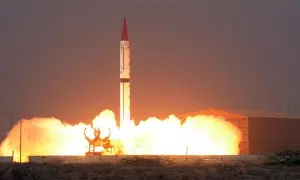
The range of the Shaheen-III is sufficient to target all of mainland India from launch positions in most of Pakistan south of Islamabad. But the missile was apparently developed to do more than that. According to Gen. Kidwai, the range of 2,750 km was determined by a need to be able to target the Nicobar and Andaman Islands in the eastern part of the Indian Ocean that are “developed as strategic bases” where “India might think of putting its weapons” (Carnegie Endowment for International Peace 2015 , 10). But for a 2,750-km range Shaheen-III to reach the Andaman and Nicobar Islands, it would need to be launched from positions in the very Eastern parts of Pakistan, close to the Indian border. If deployed in the Western parts of Balochistan province, however, the range of the Shaheen-III would for the first time bring Israel within range of Pakistani nuclear missiles.
Pakistan’s oldest nuclear-capable medium-range ballistic missile, the road-mobile, single-stage, liquid-fuel Ghauri (Hatf-5), was most recently test-launched in October 2018. (ISPR 2018c). The Pakistani government states that the Ghauri can carry a single conventional or nuclear warhead to a range of 1,300 km (807 miles), although NASIC lists the range as 1,250 km (776 miles) (National Air and Space Intelligence Center 2020). NASIC also suggests that “fewer than 50” Ghauri launchers have been deployed (National Air and Space Intelligence Center 2020). The extra time needed to fuel the missile before launch makes the Ghauri more vulnerable to attack than Pakistan’s newer solid-fuel missiles, so it is possible that the longer-range versions of the Shaheen may eventually replace the Ghauri. [x] Potential deployment areas for the Ghauri include the Sargodha Central Ammunition Depot area. [xi]
On January 24, 2017, Pakistan test launched a new medium-range ballistic missile––Ababeel––that the government says is “capable of carrying multiple warheads, using multiple independent reentry vehicle (MIRV) technology” (ISPR 2017b ). [xii] The three-stage, solid-fuel, nuclear-capable missile, which is currently under development at the National Defense Complex, appears to be derived from the Shaheen-III airframe and solid-fuel motor and has a range of 2,200 km (1,367 miles). (ISPR 2017b ; National Air and Space Intelligence Center 2020). After the test-launch, the Pakistani government declared that the test was intended to validate the missile’s “various design and technical parameters,” and that Ababeel is “aimed at ensuring survivability of Pakistan’s ballistic missiles in the growing regional Ballistic Missile Defence (BMD) environment,” “further reinforce[ing] deterrence” (ISPR 2017b ). Development of multiple-warhead capability appears to be intended as a countermeasure against India’s planned ballistic missile defense system (Tasleem 2017 ).
Ground- and sea-launched cruise missiles
Pakistan’s family of ground- and sea-launched cruise missiles is undergoing significant development with work on several types and modifications. The Babur (Hatf-7) is a subsonic, dual-capable cruise missile with a similar appearance to the US Tomahawk sea-launched cruise missile, the Chinese DH-10 ground-launched cruise missile, and the Russian air-launched AS-15. The Pakistani government describes the Babur as having “stealth capabilities” and “pinpoint accuracy” and “a low-altitude, terrain-hugging missile with high maneuverability” (ISPR 2011a , 2016b , 2018a ). The Babur is much slimmer than Pakistan’s ballistic missiles, suggesting some success with warhead miniaturization based on a boosted fission design.
The original Babur-1 ground-launched cruise missiles (GLCM) has been test-launched nearly a dozen times and is likely to be operational with the armed forces. Its road-mobile launcher appears to be a unique five-axle TEL with a three-tube box launcher that is different than the quadruple box launcher used for static display. At different times, the Pakistani government has reported the range to be 600 km (372 miles) and 700 km (435 miles) (ISPR 2011a , 2012a , 2012b ), but the US intelligence community sets the range much lower, at 350 km (217 miles) (National Air and Space Intelligence Center 2020).
Pakistan appears to be upgrading the original Babur-1 missiles into Babur-1A missiles by upgrading their avionics and navigation systems to enable target engagement both on land and at sea. Following the system’s most recent test in February 2021, the Pakistani military stated that the Babur-1A’s range was 450 km (ISPR 2021e).
Pakistan is also developing an enhanced version of the Babur known as the Babur-2 or Babur-1B GLCM. [xiii] The weapon has been test-launched at least two times: in December 2016 and April 2018 (ISPR 2016b , 2018a ). In March 2020, Indian news media reported that the Babur-2/Babur-1B had failed two other tests, in April 2018 and March 2020; however, this was not confirmed by Pakistan (Gupta 2020). With a physical appearance and capabilities similar to those of the Babur, the Babur-2/Babur-1B apparently has an extended range of 700 km (435 miles), and “is capable of carrying various types of warheads” (ISPR 2016b , 2018a ). The fact that both the Babur-1 and the “enhanced” Babur-2/Babur-1B have been noted as possessing a range of 700 km indicates that the range of the initial Babur-1 system was likely shorter. NASIC has not released information on an enhanced system. After the first test in 2016, the Pakistani government noted that the system is “an important force multiplier for Pakistan’s strategic defence” (ISPR 2016b ).
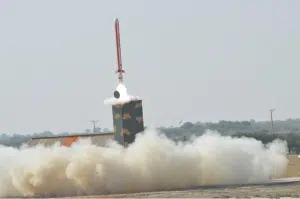
Babur TELs have been fitting out at the National Development Complex for several years and have recently been seen at the Akro garrison northeast of Karachi. The garrison includes a large enclosure with six garages that have room for 12 TELs and a unique underground facility that is probably used to store the missiles. [xiv]
Pakistan is also developing a sea-launched version of the Babur known as Babur-3. The weapon is still in development and has been test-launched twice: On January 9, 2017, from “an underwater, mobile platform” in the Indian Ocean (ISPR 2017c ); and on March 29, 2018 from “an underwater dynamic platform” (ISPR 2018b ). The Babur-3 is said to be a sea-based variant of the Babur-2 GLCM, and to have a range of 450 km (279 miles) (ISPR 2017c ).
The Pakistani government says the Babur-3 is “capable of delivering various types of payloads … [that] … will provide Pakistan with a Credible Second Strike Capability, augmenting deterrence,” and described it as “a step towards reinforcing [the] policy of credible minimum deterrence” (ISPR 2017c ). The Babur-3 will most likely be deployed on the diesel-electric Agosta class submarines (Khan 2015 ). In April 2015, the Pakistani government approved the purchase of right air-independent propulsion-powered submarines from China, the first four of which are due in 2022-2023 (Khan 2019). It is possible that these new submarines, which will be called the Hangor -class, could eventually be assigned a nuclear role with the Babur-3 submarine-launched cruise missile.
Once it becomes operational, the Babur-3 will provide Pakistan with a triad of nuclear strike platforms from ground, air, and sea. The Pakistani government said the Babur-3 was motivated by a need to match India’s nuclear triad and the “nuclearization of [the] Indian Ocean Region” (ISPR 2018b ). The Pakistani government also noted that Babur-3’s stealth technologies would be useful in the “emerging regional Ballistic Missile Defense (BMD) environment” (ISPR 2017c ).
The future submarine-based nuclear capability is managed by Headquarters Naval Strategic Forces Command (NSFC), which the government said in 2012 would be the “custodian of the nation’s 2nd strike capability” to “strengthen Pakistan’s policy of Credible Minimum Deterrence and ensure regional stability” (ISPR 2012c ). Kidwai in 2015 publicly acknowledged the need for a sea-based second-strike capability and said it “will come into play in the next few years” (Carnegie Endowment for International Peace 2015 , 16).
Pakistan also appears to be developing a variant of the Babur cruise missile, known as the Harbah, that can be carried by surface vessels. Pakistan describes the system as “a surface-to-surface anti-ship missile with land attack capability” (ISPR 2018d). Although Pakistan did not state the system’s range after either of its 2018 or 2019 tests, official photos of the system in-flight bear a strong resemblance to the Babur (ISPR 2018d; Rahmat 2019). It is unknown at this time if the Harbah will be dual-capable.
[i] For insightful analysis of Pakistan’s nuclear policy, see Siddique and Faisal ( 2016 ) and Dalton and Krepon ( 2015 ).
[ii] For references to tritium production at Khushab, see Cirincione, Wolfsthal, and Rajkumar ( 2005 ) and FAS ( 2000b ).
[iii] One year after providing this description of the Pakistani nuclear warhead program, Lavoy was appointed as Special Assistant to the President and Senior Director for South Asia at the National Security Council.
[iv] These estimates are based on reprocessing and uranium enrichment plant capacities in International Panel on Fissile Materials, Global Fissile Materials Report 2015: Nuclear Weapon and Fissile Material Stockpiles and Production report, Appendices 2 and 3, 48–49, < http://fissilematerials.org/library/gfmr15.pdf >, as well as more recent estimates.
[v] For analysis of possible nuclear facilities at Masroor Air Base, see Kristensen ( 2016 ).
[vi] For analysis of possible Pakistani missile facilities, see Kristensen ( 2016 ).
[vii] For analysis of possible Pakistani missile facilities, see Kristensen ( 2016 ).
[viii] For an excellent analysis of this doctrine and Pakistan’s potential use of battlefield nuclear weapons, see Nayyar and Mian ( 2010 ).
[ix] For analysis of possible Pakistani missile facilities, see Kristensen ( 2016 ).
[x] The Ghauri MRBM is based on North Korea’s No Dong missile.
[xi] For analysis of possible Pakistani missile facilities, see Kristensen ( 2016 ).
[xii] Note that the correct expansion of MIRV is multiple independently targetable reentry vehicle.
[xiii] It is possible that the Babur-2 and the Babur-1B are the same missile. Both names are referenced as “enhanced” versions of the Babur.
[xiv] For analysis of possible Pakistani missile brigade locations, see Kristensen ( 2016 ).
Disclosure statement
No potential conflict of interest was reported by the authors.
This research was carried out with grants from the John D. and Katherine T. MacArthur Foundation, the New Land Foundation, the Ploughshares Fund, and the Prospect Hill Foundation.
Abbasi, A. 2019. “Hope India Knows what NCA Means?” The News International , February 27. < https://www.thenews.com.pk/print/437316-hope-india-knows-what-nca-means >.
AFP. 2018. “Thrifty at 50: Pakistan keeps ageing Mirages flying.” France 24 , April 29. < https://www.france24.com/en/20180429-thrifty-50-pakistan-keeps-ageing-mirages-flying >.
Albright, D., S. Burkhard, C. Chopin, and F. Pabian. 2018. New Thermal Power Estimates of the Khushab Nuclear Reactors , Institute for Science and International Security, May 23. Available at: http://isis-online.org/isis-reports/detail/new-thermal-power-estimates-of-the-khushab-nuclear-reactors/12 [Google Scholar]
Albright, D., S. Burkhard, and F. Pabian. 2018. Pakistan’ s Growing Uranium Enrichment Program , Institute for Science and International Security, May 30. Available at: http://isis-online.org/isis-reports/detail/pakistans-growing-uranium-enrichment-program/12 [Google Scholar]
Albright, D., and S. Kelleher-Vergantini. 2015. Pakistan’ s Chashma Plutonium Separation Plant: Possibly Operational , Institute for Science and International Security, February 20. Available at: http://isis-online.org/uploads/isis-reports/documents/Chashma_February_20_2015_Final.pdf [Google Scholar]
Ansari, U. 2013. “Despite Missile Integration, Nuke Role Unlikely for Pakistan’s JF-17.” Defense News , February 7. [Google Scholar]
Associated Press. 1989. “Pakistani Jets Said to be Nuclear-Capable.” [Google Scholar]
Boucher, R. A. 2007. “Assistant Secretary of State for South and Central Asian Affairs, Testimony before Senate Foreign Relations Committee.” In U.S. Foreign Assistance to Pakistan (U.S. Government Printing Office: December 6, 2007), 31. [Google Scholar]
Burkhard, S., A. Lach, and F. Pabian. 2017. “Khushab Update.” Institute for Science and International Security, September 7. Available at: http://isis-online.org/uploads/isis-reports/documents/Khushab_Update_September_2017.pdf [Google Scholar]
Carnegie Endowment for International Peace. 2015. “A Conversation With Gen. Khalid Kidwai.” Carnegie International Nuclear Policy Conference 2015. Transcript. March 23, pp. 4–5. Available at: http://carnegieendowment.org/files/03-230315carnegieKIDWAI.pdf [Google Scholar]
Cirincione, J., J. B. Wolfsthal, and M. Rajkumar. 2005. Deadly Arsenal: Nuclear, Biological, and Chemical Threats . 2nd ed. Washington, D.C.: Carnegie Endowment for International Peace. [Google Scholar]
Coats, D. R. 2019. Worldwide Threat Assessment of the U.S. Intelligence Community , Director of National Intelligence. January 29. < https://www.dni.gov/files/ODNI/documents/2019-ATA-SFR—SSCI.pdf >.
Dalton, T., and M. Krepon. 2015. A Normal Nuclear Pakistan , Carnegie Endowment for International Peace/Stimson Center, August. Available at: http://www.stimson.org/sites/default/files/file-attachments/NormalNuclearPakistan.pdf [Google Scholar]
Dawn. 2017. “Rare Light Shone on Full Spectrum Deterrence Policy.” December 7. Available at: https://www.dawn.com/news/1375079/rare-light-shone-on-full-spectrum-deterrence-policy [Google Scholar]
Economic Times. 2016. “US Expresses Concern over Pakistan’s Deployment of Nuclear Weapons.” March 19. Available at: https://economictimes.indiatimes.com/news/defence/us-expresses-concerns-over-pakistans-deployment-of-nuclear-weapons/articleshow/51465040.cms [Google Scholar]
Economic Times. 2017a. “US Worried Pakistan’s Nuclear-weapons could land up in Terrorists’ Hands: Official.” August 25. https://economictimes.indiatimes.com/news/defence/us-worried-pakistans-nuclear-weapons-could-land-up-in-terrorists-hands-official/articleshow/60220358.cms [Google Scholar]
Economic Times. 2017b. “Pakistan made ‘counterproductive’ moves risking nuke war: Joe Biden.” January 13. < https://economictimes.indiatimes.com/news/defence/pakistan-made-counterproductive-moves-risking-nuke-war-joe-biden/articleshow/56519361.cms?from=mdr >.
FAS. 2000a. “Rawalpindi/Nilhore, PINSTECH/New Labs.” Federation of American Scientists , March 18. Available at: https://fas.org/nuke/guide/pakistan/facility/rawalpindi.htm [Google Scholar]
FAS. 2000b. “Khushab/Khusab.” Federation of American Scientists , March 15. Available at: https://fas.org/nuke/guide/pakistan/facility/khushab.htm [Google Scholar]
Fisher, R. 2016. “JF-17 Block II Advances with New Refuelling Probe.” Jane’ s Defence Weekly , January 27. < http://www.janes.com/article/57508/jf-17-block-ii-advances-with-new-refuelling-probe >.
Gady, Franz-Stefan. 2020. “Pakistan Air Force to Take Delivery of First 12 JF-17B Fighters ‘in Near Future.’” The Diplomat , February 5. < https://thediplomat.com/2020/02/pakistan-air-force-to-take-delivery-of-first-12-jf-17b-fighters-in-near-future/ >.
Gordon, M. 1989. “German Concern Said to Aid Pakistan A-Weapons.” New York Times , January 29. Available at: https://www.nytimes.com/1989/01/29/world/german-concern-said-to-aidpakistan-a-weapons.html [Google Scholar]
Government of Pakistan. 2014–2015. Ministry of Defence Production, Yearbook 2014 –2015 , p. 12. Available at: http://202.83.164.29/modp/userfiles1/file/Year%20Book%202014-15.pdf [Google Scholar]
Gul, A. 2014. “As Pakistan Expands Nuclear Program, China Seen as Most Reliable Partner.” Voice of America. May 12. Available at: https://www.voanews.com/a/as-pakistan-expands-nuclear-program-china-seen-as-most-reliable-partner/1912529.html [Google Scholar]
Gupta, S. 2020. “Pakistan’s effort to launch 750km range missile crashes.” Hindustan Times , March 23. < https://www.hindustantimes.com/india-news/pakistan-s-effort-to-launch-750km-range-missile-crashes/story-UT5CbOR3K0uVojmiOYoKjO.html >.
Hyatt, N. and S. Burkhard. 2020. “New Extension to the Chashma Plutonium Separation Facility.” Institute for Science and International Security, November 30. < https://isis-online.org/uploads/isis-reports/documents/Extension_to_the_Chashma_plutonium_separation_facility_Nov30_2020_FINAL.pdf >.
India Today. 2015. “We have Low-yield N-weapons to Ward off India’s War Threat: Pakistan.” October 20. Available at: http://indiatoday.intoday.in/articlePrint.jsp?aid=503185 [Google Scholar]
International Panel on Fissile Materials. 2015. Global Fissile Material Report 2015. Available at: http://fissilematerials.org/library/gfmr15.pdf [Google Scholar]
International Panel on Fissile Materials. 2021. “Pakistan.” April 29. < http://fissilematerials.org/countries/pakistan.html >.
ISPR. 2011a. Press release No. PR40/2011-ISPR, February 10. https://www.ispr.gov.pk/press-release-detail.php?id=1666 [Google Scholar]
ISPR. 2011b. Press release No. PR94/2011-ISPR, April 19. https://www.ispr.gov.pk/press-release-detail.php?id=1721 [Google Scholar]
ISPR. 2011c. Press release No. PR104/2011-ISPR, April 29. https://www.ispr.gov.pk/press-release-detail.php?id=1732 [Google Scholar]
ISPR. 2012a. Press Release PR143/2012-ISPR, June 5. https://www.ispr.gov.pk/press-release-detail.php?id=2088 [Google Scholar]
ISPR. 2012b. Press release PR204/2012-ISPR, September 17. https://www.ispr.gov.pk/press-release-detail.php?id=2150 [Google Scholar]
ISPR. 2012c. Press release PR122/2012-ISPR, May 19. https://www.ispr.gov.pk/press-release-detail.php?id=2067 [Google Scholar]
ISPR. 2013a. Press Release No PR20/2013ISPR, February 15. https://www.ispr.gov.pk/press-release-detail.php?id=2242 Available at [Google Scholar]
ISPR. 2014a. Press release No. PR98/2014-ISPR, May 8. https://www.ispr.gov.pk/front/main.asp?o=t-press_release&date=2014/5/8 [Google Scholar]
ISPR. 2014b. Press release No. PR248/2014-ISPR, November 13. https://www.ispr.gov.pk/press-release-detail.php?id=2701 [Google Scholar]
ISPR. 2015a. Press release No. PR92/2014-ISPR, April 15. https://www.ispr.gov.pk/press-release-detail.php?id=2835 [Google Scholar]
ISPR. 2015b. Press Release No PR382/2015/ISPR, December 15. https://www.ispr.gov.pk/press-release-detail.php?id=3129 [Google Scholar]
ISPR. 2016a. Press release No. PR16/2016-ISPR, January 19. https://www.ispr.gov.pk/press-release-detail.php?id=3163 [Google Scholar]
ISPR. 2016b. Press Release No. PR482/2016-ISPR, December 14. Available at: https://www.ispr.gov.pk/press-release-detail.php?id=3632 [Google Scholar]
ISPR. 2017a. Press Release No PR344/2017-ISPR, July 5. https://www.ispr.gov.pk/press-release-detail.php?id=4097 [Google Scholar]
ISPR. 2017b. Press release No. PR34/2017-ISPR, January 24. https://www.ispr.gov.pk/press-release-detail.php?id=3705 [Google Scholar]
ISPR. 2017c. Press Release No. PR10/2017-ISPR, January 9. https://www.ispr.gov.pk/press-release-detail.php?id=3672 [Google Scholar]
ISPR. 2017d. Press Release No. PR615/2017ISPR, December 21. https://www.ispr.gov.pk/press-release-detail.php?id=4459 [Google Scholar]
ISPR. 2018a. Press Release No PR142/2016ISPR, April 14. https://www.ispr.gov.pk/press-release-detail.php?id=4693 [Google Scholar]
ISPR. 2018b. Press Release No. PR125/2018-ISPR, March 29. https://www.ispr.gov.pk/press-release-detail.php?id=4660 [Google Scholar]
ISPR. 2018c. Press Release No. PR308/2018-ISPR, October 8. < https://www.youtube.com/watch?v=x_fksZHGFWA&ab_channel=ISPROfficial >.
ISPR. 2018d. Press Release No. PR-PN-2/2018-ISPR, January 3. < https://www.ispr.gov.pk/press-release-detail.php?id=4480 >.
ISPR [@OfficialDGISPR]. 2019a. “Pakistan successfully carried out night training launch of surface to surface ballistic missile Ghaznavi, capable of delivering multiple types of warheads upto 290 KMs. CJCSC & Services Chiefs congrat team. President & PM conveyed appreciation to team & congrats to the nation.” Tweet, August 29. < https://twitter.com/OfficialDGISPR/status/1166955085924130816 >.
ISPR [@OfficialDGISPR]. 2019b. “Pakistan successfully conducted training launch of SSBM Shaheen-1 capable of delivering all types of warheads upto range of 650 KMs. Launch was aimed at testing operational readiness of Army Strategic Forces Command (ASFC) ensuring Pakistan’s credible minimum deterrence.” Tweet, November 18. < https://twitter.com/OfficialDGISPR/status/1196342816777084929 >.
ISPR [@OfficialDGISPR]. 2019c. “Pakistan successfully conducted training launch of surface to surface ballistic Missile “Nasr” to enhance the operational efficiency of Army Strategic Forces Command besides re-validating the desired technical parameters.” Tweet, January 24. < https://twitter.com/OfficialDGISPR/status/1088403258778009600 >.
ISPR. 2019d. Press Release No. PR37/2019-ISPR, January 31. < https://www.youtube.com/watch?v=IH3go8W16yU&ab_channel=ISPROfficial >.
ISPR. 2019e. Press Release No. PR102/2019-ISPR, May 23. < https://www.youtube.com/watch?v=iPOcXXQZdyI&ab_channel=ISPROfficial >.
ISPR. 2020a. Press Release No. PR27/2020-ISPR, February 18. < https://www.ispr.gov.pk/press-release-detail.php?id=5625 >.
ISPR. 2020b. Press Release No. PR8/2020-ISPR, January 23. < https://www.ispr.gov.pk/press-release-detail.php?id=5592 >.
ISPR [@OfficialDGISPR]. 2021a. “Pakistan Day Parade – March 2021.” Tweet, March 24. < https://twitter.com/OfficialDGISPR/status/1374914302960893953 >.
ISPR. 2021b. Press Release No. PR19/2021-ISPR, February 3. < https://www.ispr.gov.pk/press-release-detail.php?id=6035 >.
ISPR. 2021c. Press Release No. PR59/2021-ISPR, March 26. < https://www.youtube.com/watch?v=eA8mZ0w2NlM&ab_channel=ISPROfficial >.
ISPR. 2021d. Press Release No. PR12/2021-ISPR, January 20. < https://www.youtube.com/watch?v=pL26yWXgBPc&ab_channel=ISPROfficial >.
ISPR. 2021e. Press Release No. PR24/2021-ISPR, February 11. < https://www.youtube.com/watch?v=p7kSBvkBMYo&ab_channel=ISPROfficial >.
Jones, G.S. 2021. “Pakistan’s Nuclear Material Production for Nuclear Weapons.” proliferationmatters.com , February 21, 2021, https://nebula.wsimg.com/0aab8d9a81ac6cfa0c0c4a986cadd8f6?AccessKeyId=40C80D0B51471CD86975&disposition=0&alloworigin=1
Kalinowski, M. B., and L. C. Colschen. 1995. “International Control of Tritium to Prevent Horizontal Proliferation and to Foster Nuclear Disarmament.” Science and Global Security 5: 147. doi:10.1080/08929889508426422. [Taylor & Francis Online] , [Google Scholar]
Khan, B. 2017. “Pakistan Officially Unveils Extended Range Ra’ad 2 Air-Launched Cruise Missile.” Quwa Defence News & Analysis Group. March 23. https://quwa.org/2017/03/23/pakistan-officially-unveils-extended-range-raad-2-air-launched-cruise-missile/ [Google Scholar]
Khan, B. 2019. “Profile: Pakistan’s New Hangor Submarine.” Quwa , November 11. < https://quwa.org/2019/11/11/profile-pakistans-new-hangor-submarine/ >.
Khan, F. H. 2015. “Going Tactical: Pakistan’s Nuclear Posture and Implications for Stability.” Proliferation Papers . No. 53. Institut Français des Relations Internationales (IFRI). September. 41. https://www.ifri.org/sites/default/files/atoms/files/pp53khan_0.pdf [Google Scholar]
Khan, F. H. 2019. “Nuclear Command, Control and Communications (NC3): The Case of Pakistan.” NAPSNet Special Reports, September 26. < https://nautilus.org/napsnet/napsnet-special-reports/nuclear-command-control-and-communications-nc3-the-case-of-pakistan/ >.
Kidwai, K. 2015. “A Conversation with Gen. Khalid Kidwai.” Carnegie Endowment for International Peace , March 23. < https://carnegieendowment.org/files/03-230315carnegieKIDWAI.pdf >.
Kidwai, K. 2020. “Deterrence, Nuclear Weapons and Arms Control.” Keynote Address, “Workshop on South Asian Strategic Stability.” International Institute for Strategic Studies and Centre for International Strategic Studies, February 6. < https://www.youtube.com/watch?v=bInVdvk39e0&ab_channel=TheInternationalInstituteforStrategicStudies >.
Kristensen, H. M. 2007. “Pakistani Nuclear Forces, 2007.” FAS Strategic Security Blog , May 9. http://fas.org/blogs/security/2007/05/article_pakistani_nuclear_forc/ [Google Scholar]
Kristensen, H. M. 2009. “Pakistani Nuclear Forces, 2009.” FAS Strategic Security Blog , August 28. http://fas.org/blogs/security/2009/08/pakistan2009/ [Google Scholar]
Kristensen, H. M. 2016. “Pakistan’s Evolving Nuclear Missile Infrastructure.” FAS Strategic Security Blog, November 1. https://fas.org/blogs/security/2016/11/pakistan-nuclear-infrastructure/ [Google Scholar]
Laskar, R. H. 2021. “Pakistan PM Imran Khan again seeks US intervention on Kashmir.” The Hindustan Times , June 21. < https://www.hindustantimes.com/india-news/pakistan-pm-imran-khan-again-seeks-us-intervention-on-kashmir-101624274376335.html >.
National Air and Space Intelligence Center. 2013. Ballistic and Cruise Missile Threat . http://fas.org/programs/ssp/nukes/nuclearweapons/NASIC2013_050813.pdf [Google Scholar]
National Air and Space Intelligence Center. 2017. Ballistic and Cruise Missile Threat . https://www.nasic.af.mil/Portals/19/images/Fact%20Sheet%20Images/2017%20Ballistic%20and%20Cruise%20Missile%20Threat_Final_small.pdf?ver=2017-07-21-083234-343 [Google Scholar]
National Air and Space Intelligence Center. 2020. Ballistic and Cruise Missile Threat . < https://media.defense.gov/2021/Jan/11/2002563190/-1/-1/1/2020%20BALLISTIC%20AND%20CRUISE%20MISSILE%%2020THREAT_FINAL_2OCT_REDUCEDFILE.PDF >.
Nayyar, A. H., and Z. Mian. 2010. The Limited Military Utility of Pakistan ’ s Battlefield Use of Nuclear Weapons in Response to Large Scale Indian Conventional Attack , Pakistan Security Research Unit (PSRU), Brief Number 61, November 11. Available at: http://spaces.brad.ac.uk:8080/download/attachments/748/Brief61doc.pdf [Google Scholar]
Quwa. 2021. “Pakistan Aeronautical Complex Delivers New JF-17B Batch.” January 2. < https://quwa.org/2021/01/02/pakistan-aeronautical-complex-delivers-new-jf-17b-batch-2/ >.
Panda, A. 2016. “Pakistan’s Shaheen-III Ballistic Missile May Use Chinese Transporter.” The Diplomat , July 1. < https://thediplomat.com/2016/07/pakistans-shaheen-iii-ballistic-missile-may-use-chinese-transporter/ >.
Rahmat, R. 2019. “Pakistan Navy flexes land attack capabilities in Arabian Sea.” Janes , April 24. < https://www.janes.com/defence-news/news-detail/pakistan-navy-flexes-land-attack-capabilities-in-arabian-sea >.
Reed, T. C., and D. B. Stillman. 2009. The Nuclear Express: A Political History of the Bomb and Its Proliferation. Minneapolis: Zenith Press. [Google Scholar]
Sanger, D.E. 2015. “U.S. Exploring Deal to Limit Pakistan’s Nuclear Arsenal.” The New York Times , October 15. Available at: https://www.nytimes.com/2015/10/16/world/asia/us-exploring-deal-to-limit-pakistans-nuclear-arsenal.html [Google Scholar]
Schaffer, T. 1989. Deputy Assistant Secretary of State for South Asia. U.S. Department of State. Proposed Sale of F ‐ 16s to Pakistan: Hearings before the Committee on Foreign Relations . U.S. Senate Committee on Foreign Affairs, August 2. [Google Scholar]
Scroll. 2016. “No, Pakistan’s Defence Minister did not Threaten Nuclear Strikes after the Uri Attacks.” September 19. Available at: https://scroll.in/video/816903/no-pakistans-defence-minister-did-not-threaten-nuclear-strikes-after-the-uri-attacks [Google Scholar]
Senate Committee on National Defense. 2016. “Pakistan & China’s JF-17 Fighter Program.” n.d. [accessed 8 September]. http://www.senatedefencecommittee.com.pk/production-detail.php?pageid=news-detail&pid=MTc= [Google Scholar]
Siddique, F., and M. Faisal. 2016. “Pakistan’s Strategic Nuclear Policy and Implications for Deterrence Stability.” CISS Insight: Quarterly News and Views IV (1): 1–17. Center for International Strategic Studies, March. http://ciss.org.pk/wp-content/uploads/2016/05/1-Article-Farzana-Faisal.pdf [Google Scholar]
Tasleem, S. 2017. “No Indian BMD for No Pakistani MIRVS.” Stimson Center, Off Ramps Initiative, Paper, October 2. [Google Scholar]
Tasleem, S., and Dalton, T. 2019. “Nuclear Emulation: Pakistan’s Nuclear Trajectory.” The Washington Quaterly , January 22, 2019, pp. 135-155. https://carnegieendowment.org/2019/01/22/nuclear-emulation-pakistan-s-nuclear-trajectory-pub-78215
The White House. 2017. “Remarks by President Trump on the Strategy in Afghanistan and South Asia.” August 21. Available at: https://www.whitehouse.gov/briefings-statements/remarks-president-trump-strategy-afghanistan-south-asia/ [Google Scholar]
US Defense Intelligence Agency. 1999. The Decades Ahead: 1999-2020, A Primer on the Future Threat, in Scarborough R (2004) Rumsfeld’s War: The Untold Story of America’s Anti-Terrorist Commander, 194–223. Washington, DC: Regnery. [Google Scholar]
US NATO Mission. 2008. “Subject: Allies Find Briefing on Afghanistan NIE ‘Gloomy’.” USNATO 000453, December 5, paragraph 12. http://www.theguardian.com/world/us-embassy-cables-documents/181529 [Google Scholar]
Warnes, A. 2020. “PAC Kamra rolls out final 14 JF-17B fighters for Pakistan Air Force.” Janes, December 30. < https://www.janes.com/defence-news/news-detail/pac-kamra-rolls-out-final-14-jf-17b-fighters-for-pakistan-air-force >.
World Bulletin. 2013. “Pakistan Refutes Saudi Funding, Weapons Claims.” November 9. [Google Scholar]
Together, we make the world safer.
The Bulletin elevates expert voices above the noise. But as an independent nonprofit organization, our operations depend on the support of readers like you. Help us continue to deliver quality journalism that holds leaders accountable. Your support of our work at any level is important . In return, we promise our coverage will be understandable, influential, vigilant, solution-oriented, and fair-minded. Together we can make a difference.
Keywords: Nuclear Notebook , Pakistan , ballistic missiles , cruise missiles , delivery systems , nuclear weapons Topics: Nuclear Notebook , Nuclear Risk , Nuclear Weapons
- Copy link Linked copied
Does anyone have any idea what effects the floods this year might have had on their stockpiles? No doubt the nuclear materials are stored in a secure fashion, but the flood could have overwhelmed lowlying facilities, and I hope everything is safe.

Hans M. Kristensen
Hans M. Kristensen is the director of the Nuclear Information Project with the Federation of American Scientists in Washington, DC. His work focuses... Read More

Matt Korda is a senior research fellow for the Nuclear Information Project at the Federation of American Scientists, where he coauthors the Nuclear... Read More

ALSO IN THIS ISSUE
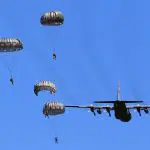
A new transatlantic division of labor could save billions every year!
By Barry R. Posen

Interview: Tom Collina of the Ploughshares Fund on the politics of defense spending
By John Mecklin

Why President Biden needs to revisit—and reduce—his defense budget
By Lawrence J. Korb
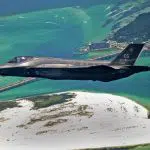
The United States needs to cut military spending and shift money to two pressing threats: pandemics and climate change
By Mandy Smithberger
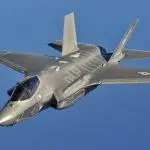
Introduction: Can we make overspending on the military politically costly?

Interview: Diane Randall, general secretary of the Friends Committee on National Legislation, discusses restraining the US defense budget
Related posts.
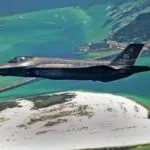
United States nuclear weapons, 2024
By Hans M. Kristensen , Matt Korda , Eliana Johns , Mackenzie Knight
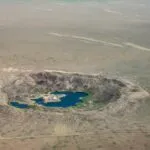
Russian nuclear weapons, 2024
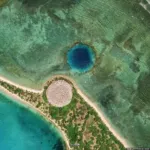
Introduction: Nuclear testing in the 21st century—legacies, tensions, and risks
By François Diaz-Maurin

New confidence-building measures can reduce tensions around subcritical tests
By Julien de Troullioud de Lanversin , Christopher Fichtlscherer
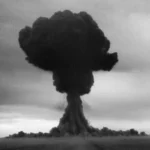
Preserving the nuclear test ban after Russia revoked its CTBT ratification
By Pavel Podvig

The horrors of nuclear weapons testing
By Walter Pincus
Bulletin Daily

To protect global health security, Africa needs more pathogen research labs
By Tom Kariuki , Denis Chopera

TB studies illustrate the importance of properly assessing the risks of pathogen research
By Anurag Agrawal

Scientists weigh in on the challenges and opportunities of high-risk pathogen research around the world
By Matt Field

The risks of underdeveloped biorisk management policies in pandemic hotspots
By Shahid Jameel

Can electrically conductive bricks replace fossil fuels?
By Phil McKenna
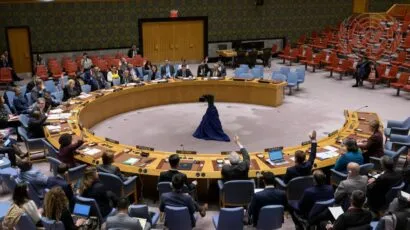
False Russian claims hijacked the biological weapons treaty. Here’s how to reclaim it
By Eva Siegmann

An obscure emission from wildfire—black carbon—is accelerating snowmelt
By Matt Simon

Another reason to cancel the Sentinel missile: the rising cost of its nuclear warhead
By Stephen Young

Ukraine says it may have destroyed Russia's last cruise missile carrier based out of Crimea
- Ukraine's navy is trying to verify whether it destroyed the Tsiklon, a Russian missile carrier.
- If confirmed, it would mean Russia has no more missile carriers in Crimea, a naval spokesperson said.
- Details of the claimed strike and its exact casualties are still emerging.
Ukraine's navy claims it has likely destroyed the last of Russia's cruise missile carriers operating out of the crucial Black Sea peninsula of Crimea.
In remarks made to Radio Free Europe , Ukraine's navy spokesperson Dmytro Pletenchuk said the navy was currently trying to verify whether or not it had destroyed the small missile carrier "Tsiklon" on Saturday.
If confirmed, it would mean there is no longer a Russian missile carrier based out of the key peninsula, he told the outlet.
Russia seized Crimea from Ukraine in 2014, and it is home to Russia's Black Sea Fleet headquarters at Sevastopol.
According to KCHF.ru , a Russian site that closely follows news of the Black Sea Fleet, the Tsiklon only entered into service in July.
The vessel's launcher enables cruise missile strikes against ground targets at a distance of up to 1,500 miles, it said.
Pletenchuk, in his interview with Radio Free Europe, said that the Tsiklon may have been hit in addition to the Russian minesweeper "Kovrovets."
The Ukrainian navy earlier claimed to have destroyed the minesweeper in Saturday's attack, hailing it as "another bad day for Russia's Black Sea Fleet."
Ukraine has not provided further details of the attack, such as where it took place or what weaponry was used. However, subsequent reports have noted the ships were based out of Sevastopol.
Russia has not commented on any damage to its ships, saying on Saturday only that it shot down nine ATACMS missiles and one drone over Crimea.
Business Insider was unable to independently confirm the claims.
Crimean Wind, a pro-Ukrainian group that monitors information in Crimea, noted on Telegram that on the night of the claimed attack a ship of similar length to the Tsiklon disappeared from satellite imagery at Sevastopol.
Pro-Russian Telegram channel Spy Dossier, citing its own sources, also said the Tsiklon had been struck.
Separate analyses of open-sourced social media posts by Radio Svoboda, published on Monday, raised the possibility that the Tsiklon, and not the Kovrovets, was hit.
The Ukrainian navy did not immediately respond to BI's request for comment.
If the Tsiklon was destroyed, it would be a blow to Russia, with the rest of its missile carriers now based at Novorossiysk, Pletenchuk said.
Last year, Russia relocated much of its Black Sea Fleet from Sevastopol, its home port, to Novorossiysk, hundreds of miles away on the Russian coast.
The move came amid Ukraine's ongoing campaign against Russian Black Sea ports and warships, using cruise missiles and drones.
In April, Ukraine claimed to have destroyed or damaged a third of the Russian fleet.
If you enjoyed this story, be sure to follow Business Insider on Microsoft Start.

France’s Macron urges a green light for Ukraine to strike targets inside Russia with Western weapons

- Show more sharing options
- Copy Link URL Copied!
France’s president has joined the head of NATO in pushing for a policy shift that could change the complexion of the war in Ukraine — allowing Kyiv to strike military bases inside Russia with sophisticated long-range weapons provided by Western partners.
The question of whether to allow Ukraine to hit targets on Russian soil with Western-supplied weaponry has been a delicate issue since Moscow launched its full-scale invasion on Feb. 24, 2022.
Western leaders have mostly shrunk from taking the step because it runs the risk of provoking Russian President Vladimir Putin, who has repeatedly warned that the West’s direct involvement could put the world on a path to nuclear conflict .
But the war has been going Russia’s way recently as the Kremlin’s forces have exploited Ukrainian shortages in troops and ammunition after a lengthy delay in U.S. military aid , and Western Europe’s inadequate military production slowed crucial deliveries to the battlefield.
Russian missiles and bombs have pummeled Ukrainian military positions and civilian areas, including the power grid. Ukraine is facing its hardest test of the war, and untying its hands on long-range weapons could spur a fightback and upset the Kremlin.
Macron said that France’s position is that “we think we must allow (Ukraine) to neutralize the (Russian) military sites from which the missiles are fired.”
“If we tell (the Ukrainians) you do not have the right to reach the point from which the missiles are fired, we are in fact telling them that we are delivering weapons to you, but you cannot defend yourself,” Macron said late Tuesday on an official visit to Germany.
His remarks came a day after NATO Secretary-General Jens Stoltenberg urged the alliance’s members to lift some of the restrictions on Ukraine’s use of Western weapons.
“The right to self-defense includes hitting legitimate targets outside Ukraine,” Stoltenberg said at a NATO meeting in Sofia, Bulgaria on Monday.
Already, at the start of May, Moscow interpreted as a threat U.K. Foreign Secretary David Cameron’s comment that Ukraine could use British long-range weapons, such as the Storm Shadow cruise missile, to hit back at Russia.
That, and Macron’s comments that he doesn’t exclude sending troops to Ukraine, prompted Russia to announce it would hold drills involving tactical nuclear weapons . Russia also warned the U.K. government that its decision could bring retaliatory strikes on British military facilities and equipment on Ukrainian soil or elsewhere.
The leaders are choosing their words carefully. Macron underlined that only Russian bases used to launch missiles against Ukraine should be regarded as legitimate targets — not other Russian bases or civilian infrastructure.
German Chancellor Olaf Scholz, speaking alongside Macron, was as usual more guarded and noncommittal, noting that Ukraine “is allowed to defend itself” under international law.
Scholz’s spokesperson, Steffen Hebestreit, clarified Wednesday that the chancellor meant that Ukraine’s defense “isn’t limited to its territory.” He declined to say what agreements with Ukraine on weapons supplied by Germany stipulate, insisting they are confidential.
Scholz has insisted on avoiding steps that could end up drawing NATO into a battlefield confrontation with Russia. Other Western leaders have expressed similar fears of a creeping, high-stakes escalation.
His concerns are shared in Washington. Over the past two years, the U.S. has gradually ceded to Ukrainian requests for support, sending tanks and long-range missile systems that it initially hesitated to provide, but with a caveat on aiming at Russian soil.
Speaking Wednesday on a visit to Moldova, U.S. Secretary of State Antony Blinken underlined that while Washington hasn’t given the green light to Kyiv for using American weapons in cross-border strikes it will continue providing Ukraine with means to effectively defend itself.
“We haven’t encouraged or enabled strikes outside of Ukraine,” Blinken said at a news conference with Moldovan President Maia Sandu. “Ukraine, as I’ve said before, has to make its own decisions about the best way to effectively defend itself. We’re going to make sure that it has the equipment it needs to do that.”
Blinken noted that Ukraine’s Western allies have adapted to the changing combat situation to offer more effective support. “We’re always learning and we’re always making determinations about what’s necessary to make sure that Ukraine can effectively continue to defend itself,” he said.
Western leaders are keen to put pressure on Putin, whose forces have recently been pushing hard against Ukrainian defenses in eastern and northeastern Ukraine.
This week has brought a cascade of new European aid, with Belgium and Spain each pledging around 1 billion euros ($1.1 billion) in new military support to Ukraine. Sweden announced Wednesday it will donate aid worth 13 billion kronor ($1.23 billion) — the largest package Sweden has donated so far. It will include air defense systems, artillery ammunition and armored vehicles.
Ukraine has recently been under intense pressure from Russian attacks in the northeastern Kharkiv region and in the partially occupied eastern Donetsk region.
Putin has said he wants to establish a “buffer zone” in Kharkiv to halt cross-border Ukrainian assaults. Analysts say the Kharkiv push also draws depleted Ukrainian forces away from Donetsk.
The Institute for the Study of War, a Washington-based think tank, said late Tuesday that Russia’s Kharkiv push has slowed in recent days and the Kremlin’s forces are probing the front line in Donetsk for weaknesses.
Follow AP’s coverage of the war in Ukraine at https://apnews.com/hub/russia-ukraine
Top headlines by email, weekday mornings
Get top headlines from the Union-Tribune in your inbox weekday mornings, including top news, local, sports, business, entertainment and opinion.
You may occasionally receive promotional content from the San Diego Union-Tribune.
More in this section

Nation-World
2 climbers suffering from hypothermia await rescue off Denali, North America’s tallest mountain
The National Park Services says two climbers are awaiting rescue near the peak of North America’s tallest mountain a day after they and a third climber in their team requested help

Seattle police chief dismissed from top job amid discrimination, harassment lawsuits
Seattle’s embattled police chief has been dismissed

Argentina women’s soccer players understand why teammates quit amid dispute, but wish they’d stayed
Players on Argentina’s women’s squad say they understand why four teammates quit amid a dispute with the national soccer federation over pay and conditions but insist they’ll seek improvements by working from within

Republican blocks confirmation of first Native American federal judge for Montana
Republican Sen. Steve Daines has blocked a Biden administration judicial nominee who would have been Montana’s first Native American federal district court judge
Michigan willing to spend millions to restore Flint properties ripped up by pipe replacement
The state of Michigan says it’s willing to step in and oversee property repairs at 1,900 homes in Flint

At Sen. Bob Menendez’s bribery trial, prosecutors highlight his wife’s desperate finances
Prosecutors at Sen. Bob Menendez’s bribery trial have showed jurors hundreds of texts, emails and phone calls that show his girlfriend-turned-wife’s desperate financial situation before New Jersey businessmen came to the rescue

IMAGES
VIDEO
COMMENTS
Pakistan's missile arsenal forms an important part of its defense strategy for offsetting the significant conventional military advantages of its main rival, India. Pakistan's arsenal consists primarily of mobile short- and medium-range ballistic missiles, but it is also making strides in its cruise missile capability. Pakistan's combined strategic forces allows it to target almost any...
On 6 June 2012, Pakistan conducted a successful test-fire of the multi-tube, indigenously developed cruise missile Hatf-VII (Babur), which can carry both nuclear and conventional warheads with stealth capabilities. It was the third test-fire conducted by Pakistan in the recent past, of different capacity and load.
Ground- and sea-launched cruise missiles. Pakistan's family of ground- and sea-launched cruise missiles is undergoing significant development with work on several types and modifications. The Babur (Hatf-7) is a subsonic, dual-capable cruise missile with a similar appearance to the US Tomahawk sea-launched cruise missile, the Chinese DH-10 ...
The Ra'ad (Urdu: رعد; lit."Thunder"; Military designation: Hatf-VIII Ra'ad, Transl.: Target-8), is a subsonic, standoff, and an air-launched cruise missile (ALCM) designed and jointly developed by the National Engineering & Scientific Commission (NESCOM) and Pakistan Air Force's Air Weapons Complex.It is deployed in the military service of Pakistan Air Force as Hatf-VIII, and has provided ...
The Ra'ad (Hatf 8) is an air-launched cruise missile developed by Pakistan. The turbo-jet powered missile can reportedly range 350 km Hatf 8 Development Pakistan reportedly began testing the Hatf 8 in August 2007 and has conducted several additional tests since then, including a reportedly successful flight in January 2016. The Hatf 8's appearance suggests...
The Ra'ad-II (Urdu: رعد-۲,"Thunder-2") is a standoff and an air-launched cruise missile (ALCM) derived from the Hatf-VIII Ra'ad. It was first publicly unveiled on the Pakistan Day Parade on 23 March 2017,. The Ra'ad features extended range, changes in its control mechanism, its guidance and enhanced flight control systems.
The low-flying stealthy cruise missiles are generally difficult to detect with radar. Pakistan first tested the Babur system in August 2005 and has launched its several variants over the years.
Published 2:25 AM PDT, December 21, 2021. ISLAMABAD (AP) — Pakistan's military test-fired a home-grown Babur cruise missile on Tuesday that has a range of more than 900 kilometers (560 miles), twice the distance of an earlier missile of the same model, a statement said. The missile's extended range further enhances nuclear-armed Pakistan ...
ISLAMABAD — Pakistan's military test-fired a homegrown Babur cruise missile on Tuesday that has a range of more than 900 kilometers (560 miles), twice the distance of an earlier missile of the ...
Oct 24, 2023. Pakistani-made Shaheen-III and Ghauri missiles, which are capable of carrying nuclear warheads, are displayed during a military parade in Islamabad on March 23, 2022. (Anjum Naveed ...
Pakistan's family of ground- and sea-launched cruise missiles is undergoing significant development with work on several types and modifications. The Babur (Hatf-7) is a subsonic, dual-capable cruise missile with a similar appearance to the US Tomahawk sea-launched cruise missile, the Chinese DH-10 ground-launched cruise missile, and the ...
The Pakistan Navy (PN) announced on 5 November that it conducted a test-firing of its Zarb land-based anti-ship cruise missile (ASCM) system (also known as the Zarb Weapon System) during a ...
Pakistan's state-owned Global Industrial and Defence Solutions (GIDS) showcased the Harbah subsonic cruise missile for the first time in an international forum at DIMDEX 2022, held in Doha, Qatar ...
Pakistan's family of ground- and sea-launched cruise missiles is undergoing significant development with work on several types and modifications. The Babur (Hatf-7) is a subsonic, dual-capable cruise missile with a similar appearance to the US Tomahawk sea-launched cruise missile, the Chinese DH-10 ground-launched cruise missile, and the ...
Cruise Missiles. Pakistan currently has three cruise missiles in development with land, air, and sea launch capabilities. The Babur (Hatf-7) is a mobile land-based missile with a range of 350 km. 8 The Hatf-7 is designed to fly at low altitudes to avoid radar detection and can carry nuclear warheads.
The Babur (Hatf 7) is a Pakistani ground-launched cruise missile. In upgraded forms, it has a range of up to 700 km and can deliver nuclear and conventional payloads. Babur Development Pakistan began developing the Babur missile in the 1990s in response to India's nascent cruise missile program. In a surprise to the U.S. intelligence community,...
The enhanced range BrahMos missiles will complicate the India-Pakistan deterrence equation. India already had the temptation to launch a counter-force strike against Pakistan. It is continuously ...
21 Dec 2021, 6:10 pm. ISLAMABAD: Pakistan on Tuesday successfully test-fired an "enhanced range version" of the indigenously-built surface-to-surface Babur cruise missile that can strike targets ...
Hanan Zaffar March 28, 2022. 1 minute read. Facebook X. Pakistan showcased its new anti-ship cruise missile Harbah for the first time at the Doha International Maritime Defence Exhibition and Conference (DIMDEX) in Qatar. The missile was developed for the Pakistan Navy to create an indigenous anti-ship missile solution for its vessels.
Pakistan Monday successfully test-fired its first Submarine-Launched Cruise Missile capable of carrying a nuclear warhead up to 450 kms from an undisclosed location in the Indian Ocean, giving the country a "credible" second-strike capability, the military said. The missile, Babur-3, was fired from ...
Pakistan announced Thursday that it had successfully conducted another test-firing of a nuclear-capable, submarine-launched cruise missile (SLCM), which has a range of 450 kilometers. The ...
For more on Pakistan's land-based ballistic missiles, visit the Worldwide Ballistic Missile Inventory factsheet. Cruise Missiles. The Babur (Hatf-7) is a ground-launched nuclear-capable cruise missile that is likely operational. The U.S. intelligence community estimates a 350 km range, though the Pakistani government has claimed a range of ...
The BrahMos missile - a nuclear-capable, land-attack cruise missile jointly developed by Russia and India - was fired on March 9, prompting Pakistan to seek answers from New Delhi on the ...
Surface-to-surface missiles. Rocket Artillery. Anti-tank Guided Missiles (ATGM) Battlefield Range or Tactical Ballistic Missiles (BRBM) Short Range Ballistic Missiles (SRBM) Medium Range Ballistic Missiles (MRBM) Ground-Launched Anti-Ship & Anti-Surface Guided Missiles. Ship-Launched Anti-Ship & Anti-Surface Guided Missiles.
On the offensive side, these destroyers are armed with a variety of missiles, like Tomahawk cruise missiles, which enable precision strikes over long distances. ... 14. Pakistan. Source: national ...
The US Armed Forces are working closely to integrate and adapt different missile systems within their inventories. Most recently, the US Army sand Lockheed Martin launched a Patriot Advanced Capability 3 (PAC-3) missile segment enhancement interceptor from a US Navy (USN) ground-based, containerised Mk70 launcher platform against a cruise missile target mid-flight for the first time.
Pakistan rejected what it said was the "political use of export controls" after the United States imposed sanctions on four entities for their alleged involvement in supplying "missile ...
Ground- and sea-launched cruise missiles. Pakistan's family of ground- and sea-launched cruise missiles is undergoing significant development with work on several types and modifications. The Babur (Hatf-7) is a subsonic, dual-capable cruise missile with a similar appearance to the US Tomahawk sea-launched cruise missile, the Chinese DH-10 ...
The vessel's launcher enables cruise missile strikes against ground targets at a distance of up to 1,500 miles, it said. Pletenchuk, in his interview with Radio Free Europe, said that the Tsiklon ...
FILE - The Storm Shadow cruise missile is on display during the Paris Air Show in Le Bourget, north of Paris, France, on June 19, 2023. French President Emmanuel Macron has called for Western ...